Spring has sprung here at the bottom of New Zealand.
Scoliopus bigelovii .In previous years I've caught a slight whiff of it's disagreeable scent however this year the smell was almost unbearable as i tried to get in close with the 60mm macro lens.
Iris reticulata Katharine Hodgkin .The colouring seems more vibrant this season .I wonder if this is because the trough was emptied about 3 months ago and new mix added .
Narcissus tazetta ssp patulus needs a warm sunny spot hence i grow it in a pot .This one has a pleasant scent.
Comments
A number of unknown ,(at
A number of unknown ,(at least to me), Galanthus .....
Double Helleborus hybridus grown from Australian seed .
Cheers Dave.
We have had a few warm days
We have had a few warm days here at the end of July and the garden has begun to move. I took a walk round with my camera and took a few pictures.
Heleborus niger
Helleborus foetidus
Helleborus x sternii This originally came from a seedlist as Helleborus viridus but is possibly just a form of Helleborus argutifolius. I did not particularly care for it at first but the contrasting green of the foliage and flowers are quite attractive
Helleborus hybridus dark and white forms The dark form has been in the garden forever and has survived being grazed by sheep and cattle - not that I imagine hellebores would taste very nice. I bought the white form about 20 years ago and it has proved to be hardy and reliable increasing well from seed.
Helleborus hybridus seedling from seed supplied by Dave Toole. He will probably want it back now it has flowered.
Crocus It is a hybrid cultivar but I have forgotten its name.
A nice remembrance of or
A nice remembrance of or forecast for spring (depending on a northern hemispherite's point of view!) Everything is looking lovely and fresh.
I am not sure I like it - I
I am not sure I like it - I do not mean your flowers but that is a sign it is going the wrong way here!
On the other hand, I am looking forward to the spring flowers!
The above two gentlemen who
The above two gentlemen who live south of here seem to have spring earlier, which is not right in this hemisphere. Dave your Scoliopus had me out searching to see if mine were ok. They are, but their noses are not through the mulch yet. And David that last Heleborus seedling had Elaine suggesting you are really in for a cooking treat on your next visit. Certainly good bargaining material there. Have a bit of colour here still, mainly from winter flowering plants. Below a shot of an uncovered outdoor plunge.
It's like your own private
It's like your own private flower show!
What are you using for plunge material...
sphagnum moss?
Thanks Lori and Hoy.
Thanks Lori and Hoy.
Winter here was a non event and now we are getting some more warmth with extended day time hours ,plants are popping up everywhere.I even have a couple of trilliums in bloom,pics later this weekend.
Nice Hellebores David.I was up your way on Saturday south of Waihola pig hunting ,(successfully),with my brother and it did enter my mind to pop around and 'offer' to take your seedling under some sort of ancestral claim ....wink.
Stuart your frame looks great .I have another clump of Scoliopus bigelovii at the same stage as yours .It normally flowers at the end of the month.
Tell Elaine i have a multitude of one year seedlings beside the doubles and others like David's seedling.She is most welcome to a few although it will be pot luck as they are all growing together in the same bed.I can pot up some and bring them up to Christchurch next month.Just let me know .No cooking required --smile.
Here's some colour from Sunday .
Romulea clusiana.
Narcissus cyclamineus .
Crocus biflorus ssp biflorus has such wonderful strong outside feathering that can also be seen from inside the cup.
Cheers Dave.
Senecio 2, very nice! My
Senecio 2, very nice! My plants don't look like that in February!
What are you using for plunge
What are you using for plunge material...
sphagnum moss?
I use wood shavings. They are good for insulation, lighter than sand, and if kept well soaked in summer they keep the root zone cool with the resultant evaporation.
Below Asphodelus acaulis, this has been flowering for weeks now.
Dave, some very nice bulbs
Dave, some very nice bulbs you have!
Although I am not quite ready for winter yet, I already look forward to see my spring bulbs. In the meantime I can admire yours!
Senecio 2, Nice Asphodelus! I do grow a big white one but not this.
Hello all,
Hello all,
As odd as it may seem to all our Northern hemisphere friends spring is certainly on its way here. According to our local newspaper we have had the warmest July on record though some days have been quite cold.
I am not sure I can compete with Dave's and Stuart's horticultural efforts. Stuart in particular has been known to show the odd plant and win a few prizes at various shows. However I will post a few pictures of shrubs flowering in my garden.
Camillia transnokoensis
Chaenomeles,red cultivar
Kowhai (Sophora "Stuart's Gold") This is a New Zealand native There are 7 species and numerous selected varieties. In the last few days they have come into flower all over the city and look truly magnificent. This one is my own selection and I have named it after my great-uncle who promoted my early interest in New Zealand native plants
Hazel catkins Those of you with sharp eyes may see a female flower above the right hand male catkins
Last, Southern rata (Metrosideros umbellata) This species is normally summer-flowering (December- January) but I found a plant that produced a few flowers in winter so I propagated it. As New Zealand is an island set in a large ocean the seasons as delineated in the northern hemisphere are do not follow in the same way here. Trees can flower sporadically at odd times of the year when conditions are favourable.
Dave and Stuart,
Dave, David and Stuart,
nice pics - we can't grow some of those things here - way too hot and dry!
Here are a few things in bloom this week.
Narcissus Thirty 'O; A dwarf shrub in a sand bed - An Aussie Native Plant, Pomaderris obcordata;
Retic Irises Harmony, Pauline, Cantab;
cheers
fermi
Hi Fermi,
Hi Fermi,
I like your little Pomaderris. It is a nice compact shrub. We have eight indigenous species one of which (Pomaderris phylicifolia) we share with you.
David L wrote:
[quote=David L]
Hello all,
As odd as it may seem to all our Northern hemisphere friends spring is certainly on its way here. According to our local newspaper we have had the warmest July on record though some days have been quite cold.
[/quote]
We have had one of the warmest Julys too! A good 2C warmer than normal!
David, I have tried some NZ Sophora species without luck so far. Which one would you recommend in my climate? I have no hope in success with any Metrosideros though!
I like Pomaderris too but
I like Pomaderris too but have no hope of growing any of the 70 species although an Australian tree, the Wollemi pine, has survived for 3 years now! It suffered badly in the last cold and dry winter.
Hoy wrote:
[quote=Hoy]
David, I have tried some NZ Sophora species without luck so far. Which one would you recommend in my climate? I have no hope in success with any Metrosideros though!
[/quote]
Hello Trond,
I am not entirely sure if Sophora would survive in your climate. However, you could try Sophora microphylla, the most wide-spread and hardy species. There are some provisos. It requires good fertile soils to grow well. It would not be happy on poorly-drained, low-nutrient acid soils. This species goes through an extended juvenile stage and may take 10 -15 years to flower. There is a lot of diversity in Sophora microphylla in terms of climatic adaptation, flowering times etc. Winter temperature would be the limiting factor (less then -5 degrees of frost). A lot of the forms sold commercially are the earlier maturing species ie Sophora tetraptera, Sophora molloyi ('Dragon's Gold'), Sophora howinsula ('Gnome') and are not as hardy.
Metrosideros umbellata (Southern rata) grows on the Auckland Islands (50 degrees 30 minutes south) so you could try that species as well.
Hoy wrote:
[quote=Hoy]
... an Australian tree, the Wollemi pine, has survived for 3 years now! It suffered badly in the last cold and dry winter.
[/quote]
Well, it has survived for a few million years apparently, so it's good to know you're helping to keep it alive, Trond!
Here are a few more pics:
Narcissus Jessamy and Lachenalia aloides in the garden;
Anemone coronaria - a little sweetie - ex Iraq via Goteborg;
Mixed Hybrid hoops - in the rock garden;
cheers
fermi
Thanks Hoy .
Thanks Hoy .
Fermi some of your Narcissus are at the same stage as mine ie N. Jessamy. Nice looking Anemone by the way .
With your increased light levels you 'do' natives far better than I can David .
Here's a few more 'weeds'.
NARGS seedex sown 2009 .Crocus sieberii ssp atticus .I understand C.'Firefly' is a related cultivar however I think the species is more attractive .......
Just to prove i grow a few things other than bulbs ,(Smile),Hepatica nobilis ,deep pink, in one of the troughs..
I love the results you get when photographing Hellebores using the light to show up the subtle shadows over the partially overlapping petals.
The first of the various coloured Corydalis solida forms is well advanced.
It's just about Trillium time.Most have noses in various stages of growth.I counted 4 plants today where the buds are starting to open.Here's Trillium angustipetalum just waiting for a little more heat .
This plant was affected by a fungal attack last season and looked very sick.While it has improved a lot this year you can see a smaller white bud which in my experience might open to a deformed flower.
I 'nuked' all the plants a couple of weeks ago with 'Octave ' and will spray again in a few weeks .
Rightio that's enough from me tonight.
A big thank you to Lori for giving a brief explanation on another topic on how to use embedded images .
Cheers Dave.
Peak flowering time for
Peak flowering time for Hellebores.
Here's a few showing the wonderful variation.
I'll see if i can post the 13 pics ,(roll eyes--grin ),in one go......
David L wrote:
[quote=David L]
David, I have tried some NZ Sophora species without luck so far. Which one would you recommend in my climate? I have no hope in success with any Metrosideros though!
Hello Trond,
I am not entirely sure if Sophora would survive in your climate. However, you could try Sophora microphylla, the most wide-spread and hardy species. There are some provisos. It requires good fertile soils to grow well. It would not be happy on poorly-drained, low-nutrient acid soils. This species goes through an extended juvenile stage and may take 10 -15 years to flower. There is a lot of diversity in Sophora microphylla in terms of climatic adaptation, flowering times etc. Winter temperature would be the limiting factor (less then -5 degrees of frost). A lot of the forms sold commercially are the earlier maturing species ie Sophora tetraptera, Sophora molloyi ('Dragon's Gold'), Sophora howinsula ('Gnome') and are not as hardy.
Metrosideros umbellata (Southern rata) grows on the Auckland Islands (50 degrees 30 minutes south) so you could try that species as well.
[/quote]
Thank you David!
I am encouraged to try both Sophora microphylla (in fact I have tried it once before - but it seems that the provenience wasn't the best) and Metrosideros umbellata. Have to look for seed though as plants are probably impossible to find in any nursery here.
Thank you guys for your
Thank you guys for your spring flower show!
I can hardly wait for spring now! In fact spring is the best time of the year in my garden. I have lots of spring flowers but few summer and fall flowering plants.
Dave, are you sure that the Corydalis is a solida type? My plants never flower before the leaves emerge but that can in fact be a an effect of the climate.
Thanks Hoy ,pleased you are
Thanks Hoy ,pleased you are enjoying the 'show'.
Your garden sounds like mine .During the few times i come home from visiting other peoples garden in summer i realize i should be growing 'later ' flowering plants ,however my excuse is that I'm often away in the mountains over this period .........(read into that last comment I'm just lazy---wink ! smile!).
I'm no expert Hoy .The Corydalis was sent from Sweden as C.solida .The plant probably needs more light so maybe is a bit drawn.If you look closely you can just make out leaves at the base of the plant.
I had a quick check outside just now with the torch !..All my other Corydalis solida in bud show no leaves at the moment so i think it 's on account of climatic conditions.
Oh, my, Dave. You have
Oh, my, Dave. You have really been bit by the hellebore bug, haven't you? <smile> It's a gorgeous display. Thanks for sharing.
Thanks Claire
Thanks Claire
Of course they are so great for providing colour in the garden at this time of the year .
Luckily there is a specialized Hellebore Nursery about an hour up the road.They have developed some stunning forms which have started to appear in some of the local nurseries in the last 2/3 years.It's so refreshing to see them as we are somewhat starved of new plant introductions that appear overseas on account of our strict Biosecurity regulations.
David L wrote:
[quote=David L]
Hello all,
As odd as it may seem to all our Northern hemisphere friends spring is certainly on its way here. According to our local newspaper we have had the warmest July on record though some days have been quite cold.
Camillia transnokoensis
[/quote]
We've had the warmest July in a long time in the UK too, David! ;.)
That Camellia is really lovely - I wonder if it would survive in NE Scotland? - Must see if anyone is offering it over here.
Maggi
Edit later : Hmm, yes it is available and no, the opinion given is that it won't cope up here without more winter protection than I can give it - rats!
Spring is nearly here and the
Spring is nearly here and the little bulbs are in full swing:
A new Div 6 daff from Keira Bulbs in Canberra
A different form of Iris histrioides ssp aintabensis collected by Brian Mathew in Turkey;
my original clump of Babiana odorata has been infiltrated by a seedling - crossed with Babiana pygmaea I'd say!
cheers
fermi
Some of the South African
Some of the South African Romulea's provide colour at this time of the year .
Yellow R. diversiformis on Lewisia foliage.
Another yellow this time R.hirta .
However I understand that R.sabulosa is considered by some to be the king,( or is it queen?--smile ), of the lot.
A few like Romulea rosea can be a bit weedy in our conditions so any species I grow from seed I trial in pots before deciding whether to plant out in troughs or garden proper.
Some recent new flowerings:
Some recent new flowerings:
Bulbinella (came as B. cauda-felis but maybe) eburnifolia
Retic iris Edward
cheers
fermi
Hi Dave,
Hi Dave,
We've now got Romulea sabulosa in bloom as well, but a different clone as the markings are slightly different. I'll try to post a pic when I get to work tomorrow.
Romulea rosea is I think the one that is a huge pest here - entire paddocks are covered in it and it is murder to cut with a hand mower! We also have what looks like the Romulea hirta you posted, though it came labeled as R. cruciata. One of the European species, R. hartungii is also in bloom - not sure if they are compatible but I tried a bit of pollen from R. sabulosa on it!
cheers
fermi
I remember drooling over that
I remember drooling over that Trillium cultivar last season. So nice to see them again!
I didn't realize you had similar seedlings(?), too.
Scrumptious, all of them!
You do have a fine collection
You do have a fine collection of spring bulbs, Fermi!
Dave, that Trillium is really special ;-)
Thanks all.
Thanks all.
Rick here's a better pic i took in Vals garden back in 2011 of Trillium chloro.'Val Mulvihill'. (Warning to Mark --sunglasses suggested --smile).This shows how bright the yellow colour really is.
My pale yellow ,a chance seedling from mixed T.chloro is no competition at all.
At the other end of the scale --T.nivale .
A couple of Primulas .
Cheers Dave.
Thanks for the advance
Thanks for the advance warning Dave, I must say 'Val Mulvihill' is the most fantastic Trillium selection ever, at least in my book. Does this selection set seed, and if so, do the seedlings vary much? Just curious as to what further generations might bring to the table. Thanks for showing that marvelous clump, excellent photo too.
Now, slowly taking my sunglasses off and averting my eyes ;-O and on to the delicate sweetness of Trillium nivale and cheerful Primula.
Thanks for the comments Mark
Thanks for the comments Mark and apologies for the delay in replying ,I need to get off Facebook ......
Yes T.chloro 'Val Mulvihill' sets seed however I understand that these don't come true and the colours vary considerably.
Mark McD wrote:
[quote=Mark McD]
Thanks for the advance warning Dave, I must say 'Val Mulvihill' is the most fantastic Trillium selection ever, at least in my book. Does this selection set seed, and if so, do the seedlings vary much? Just curious as to what further generations might bring to the table. Thanks for showing that marvelous clump, excellent photo too.
Now, slowly taking my sunglasses off and averting my eyes ;-O and on to the delicate sweetness of Trillium nivale and cheerful Primula.
[/quote]
Think I am longing for spring
Think I am longing for spring! And looking for more Trilliums!!
A few Fritillaria sps out at
A few Fritillaria sps out at the moment.
F.kotschyana
F.carica pale form
F.latifolia in one of the troughs
F.affinis
First flowering from NARGS seedex 2009 as F.euboeica which should be a bright clear yellow. Anyone have any ideas please.
Wonderful link Maggi, I lost
Wonderful link Maggi, I lost at least an hour going there. ;-) , the trillium forms and colors shown are truly outstanding.
Dave, some choice Frit nuggets there, I particularly like latifolia. Not sure what the true identity of the mis-identified F. euboeica is, maybe Ron will know.
Thanks, Mark - there are some
Thanks, Mark - there are some wonderful gardens in NZ and their Trillium Group has some very enthusiastic members.
Dave: a photo of the foliage and the inside of the flower might help. It's got a look of rhodocanakis about it or rhodocanakis subsp. argolica, (described in 1987) which is supposed to be a stable hybrid between rhodocanakis and graeca
Maggi
edit to add details of description:
Fritillaria rhodocanakis subsp. argolica (Liliaceae), a New Subspecies from Peloponnese, Greece: Eugenia Zaharof
Willdenowia
Bd. 16, H. 2 (Mar. 9, 1987), pp. 343-348
Published by: Botanischer Garten und Botanisches Museum, Berlin-Dahlem
Those frit images are so
Those frit images are so choice, it looks like the plants put on make-up for the photo op!
I am partial to the F. carica form, so graceful looking.
Nice to see the spring
Nice to see the spring flowers (ahh- to grow Babianas etc in the ground!) - soon we will have a long white stretch ahead to wait for more flowers here... I need to get more Trilliums too- I finally planted out some several year old seedlings of erectum and grandiflorum.. no doubt stunted from their long stay in pots (though they were more like baskets and sunk in the soil full time) so who knows how long till I see flowers... I'll enjoy the photos till then and look for more seed!
Hello Maggi
Hello Maggi
Here's a foliage pic and one of the inside of the flower which was taken by use of the flash.Hope those help.
Yip i had considered F.rhodocanakis and also thought maybe F.crassifolia .....however must admit F.graeca never came to mind.
Cheers Dave.
Mark -These small Frit. sps appear tough --we've had fronts coming through the last couple days --strong wind and rain and they have stood up well.
Rick -The pale F.carica has a subtle charm however I much prefer the bright yellow forms.....smile.
Cohan - In my climatic conditions some of the Eastern Trillium sps take at least 6 years to flower from germination. I'm a bit 'slack' in getting seedlings into the garden generally not planting out until the 4 year ! .
Cheers Dave
Thanks, Dave.. I'm probably
Thanks, Dave.. I'm probably around the 4 year mark for these- the date is on the tags, but forget now.. Plus I got them out very late in the year I sowed them (though they were moist packed from Kristl) so I don't know if that made any difference.. More to the point, I probably did not start fertilising nearly soon enough, so I'm sure they are tinier than they should be. I don't use fertiliser in ground, but I think pots just don't get the soil flora making fertilising essential. As long as they are alive and growing I don't mind too much- I find if you have enough projects going you are unlikely to hover over any one (no time!)..lol
Beautifully grown Fritillaria
Beautifully grown Fritillaria Dave. Hope there's more to come!
Sorry but I can't help with the 'mystery' Fritillaria. Seems to be parts of a number of species coming together! Looking forward to seeing the rest of the seedlings flowering in a year or two time, ![]()
I have no idea of the
I have no idea of the identity of the Frit, but it could possibly be a hybrid?
Dave, I would love to grow more Fritillarias but slugs forbid! However your pictures make me want to try again and again!
Longma wrote:
[quote=Longma]
Beautifully grown Fritillaria Dave. Hope there's more to come!
Sorry but I can't help with the 'mystery' Fritillaria. Seems to be parts of a number of species coming together! Looking forward to seeing the rest of the seedlings flowering in a year or two time, ![]()
[/quote]
A few other Frits have gone over Ron however I'm hopeful seed I received back 2003 !! as F.pyrenica var lutea will finally flower .......10 years in a pot is obviously far too long --they should have been planted out in the garden long ago...![]() .
.
Cheers Dave.
Hoy wrote:
[quote=Hoy]
I have no idea of the identity of the Frit, but it could possibly be a hybrid?
Dave, I would love to grow more Fritillarias but slugs forbid! However your pictures make me want to try again and again!
[/quote]
Hoy
Damn slugs have caused a few problems here as well and I'm still checking underneath pots every few days......
Cheers Dave.
Toole wrote:
[quote=Toole]......... however I'm hopeful seed I received back 2003 !! as F.pyrenica var lutea will finally flower .......10 years in a pot is obviously far too long --they should have been planted out in the garden long ago...![]() .Cheers Dave.
.Cheers Dave.
[/quote]
Looking forward to seeing that Dave, I hope you have better luck than I did. I carefully selfed this plant ( making sure there could be no contamination ) six years ago and got a good amount of seed. ( picture taken last year ) -
Dozens of its offspring flowered for me this year ( still searching for pictures ). Suffice to say, none of them were yellow!![]()
Ron, you have to get up
Ron, you have to get up pretty early in the morning to beat those pollinators to a freshly opened flower......
It's not uncommon for me to peel open a lily bud to protect the stigma from contamination for future hand pollination.
Which brings up a question, Ron....
Are frits generally self fertile? I am wondering because of their close relation to Lilium, which are usually self infertile.
RickR wrote:
[quote=RickR]
Ron, you have to get up pretty early in the morning to beat those pollinators to a freshly opened flower......
Which brings up a question, Ron....
Are frits generally self fertile? I am wondering because of their close relation to Lilium, which are usually self infertile.
[/quote]
I use paper bags over the chosen bud, tied around the stem. They stay in place until the capsule begins to form.
I wouldn't like to generalize either way Rick. Its works for some, ... others I've never had any joy.
Spent the last 4 days up
Spent the last 4 days up country attending the NZAGS annual show in Christchurch ,some 8 hours traveling time from home.Here's a few images of yummy Trilliums i saw en route.
Cheers Dave.
Nice ones! I think I really
Nice ones! I think I really need to get some Trillium seeds ![]() So these were just laying around by the road?
So these were just laying around by the road? ![]()
No Trilliums where I am, but
No Trilliums where I am, but my friend Cathy grows this one at Macedon, which has a cooler, wetter climate,
she also grows the lovely South African Gladiolus liliaceus,
In our garden we have the evening scented Pelargonium triste now in bloom,
cheers
fermi
Love the pelly, and that Glad
Love the pelly, and that Glad really is liliaceous!
A few more Frits.
A few more Frits.
F.collina in one of the troughs.
F.ehrhartii in another.
Received as F.tenella ?.
F.graeca ssp. thessala in one of the beds.
F.messanensis ssp.gracilis in another bed.
A nice form of Erythronium oregonum from seed.
A couple of unknown Erythroniums .
Cheers Dave.
cohan wrote:
[quote=cohan]
Love the pelly, and that Glad really is liliaceous!
[/quote]
Hi Cohan, glad you liked them![]()
Here's an Aussie hybrid called 'Mallee Magic',
cheers
fermi
Dave, some lovely frits!
Dave, some lovely frits!
We have Fritillaria messanensis ssp messanensis in bloom right now,
cheers
fermi
Thanks Fermi
Thanks Fermi ![]()
Great exemplary photos of the
Great exemplary photos of the frits, Dave!
They bunch you show is a nice array.
And although the erythronium subjects are very cool on their own, your photography shows them off in an fantastic fashion!
More beautifully grown
More beautifully grown Fritillaria Dave. They really do well for you.
The 'received as F. tenella ' looks good to me, although these days its more often called F. montana , with F. tenella as a synonym.
http://www.fritillariaicones.com/icones/ic600/Fritillaria_Icones613.pdf
F. tenella is also a synonym of F.orientalis according to Kew List. ![]()
I haven't changed the label on my plants yet either! ![]()
Lovely F. messanensis Fermi. So many forms grown under this name, and you seem to have a good one there. ![]()
Thanks, Ron,
Thanks, Ron,
I must check with Marcus Harvey http://hillviewrareplants.com/ about its origin - I got it from him about 10 years! I'm not sure if he collected the seed himself as he does visit Greece and Turkey collecting seed. Which reminds me he must be due to send out a new seed list soon!![]()
cheers
fermi
RickR wrote:
[quote=RickR]
Great exemplary photos of the frits, Dave!
They bunch you show is a nice array.
And although the erythronium subjects are very cool on their own, your photography shows them off in an fantastic fashion!
[/quote]
Thanks a lot Rick
Here's another one you might like .
E.citrinum.
Cheers Dave.
Longma wrote:
[quote=Longma]
More beautifully grown Fritillaria Dave. They really do well for you.
The 'received as F. tenella ' looks good to me, although these days its more often called F. montana , with F. tenella as a synonym.
http://www.fritillariaicones.com/icones/ic600/Fritillaria_Icones613.pdf
F. tenella is also a synonym of F.orientalis according to Kew List. ![]()
I haven't changed the label on my plants yet either! ![]()
Lovely F. messanensis Fermi. So many forms grown under this name, and you seem to have a good one there. ![]()
[/quote]
Thanks for the comments and ID confirmation Ron
I'll leave it as F.tenella i think .Not enough hours in the day to keep up with all the name changes ........![]()
Flowering in one of the troughs is one of the Synthyris species -a lovely little thing -maybe S.missurica .I'd grow it for the foliage alone.
The diminutive Primula clarkei - close up.
The unblemished blooms of Pleione alba 'cutie'.
Another Pleione ,(name forgotten sorry) ,growing outside year round in an unprotected trough.
Cheers Dave.
Some real gems there Dave,
Some real gems there Dave, but Synthyris missurica (mountain kittentails) is one that particularly resonates with me, not only for the good blue flowers, but as you say, for the excellent foliage. Here's a link to a US Forest Service plant profile:
http://www.fs.fed.us/wildflowers/plant-of-the-week/synthyris_missurica.shtml
Lots of pretties! Nice to see
Lots of pretties! Nice to see as we wind down ever closer to the big white...
Some Aussie native plants to
Some Aussie native plants to show you:
Eremophila densifolia has deep purple flowers in terminal clusters - unlike most other emu-bushes
Leschenaultia biloba (light blue) is known as "wreath flower" in Western Australia because of its growth pattern, here's it's combined with a bright yellow Senna species which stays fairly prostrate (not sure if it is an Aussie but I've sent seed of it to the NARGS Seedex this year)
cheers
fermi
You know, Fermi, I had my
You know, Fermi, I had my Leschenaultia days, a short-lived phase where I bought seed from Australia and tried growing a number of wondrous Australian native plants, the intense blue on dwarf Leschenaultia shrubs beckoned big time. I know there are other colors of Lesch. too, but I'm still intrigued with Australian flora, plants that I'll probably never be able to grow, now content just to look at them. The Eremophila is attractive too.
Hi Mark,
Hi Mark,
funnily enough that's now my attitude to a lot of those lovely little woodlanders that I have no hope of growing in my climate![]()
It did take a long time to achieve this attitude and it can easily be swayed by the thought of using the Shade house to protect them from our extreme heat (they still don't last long, though Mertensia virginica is holding on 3 years after I first got it!)
Another Aussie is this dwarf kangaroo paw, Anigozanthos "Bush gems series", in its second year - an achievement I feel as they often only last a season in our gardens - this one is planted in a raised bed with a small Senna artemesioides (and others);
cheers
fermi
Fermi wrote:
[quote=Fermi]
Another Aussie is this dwarf kangaroo paw, Anigozanthos "Bush gems series", in its second year - an achievement I feel as they often only last a season in our gardens - this one is planted in a raised bed with a small Senna artemesioides (and others);
cheers fermi
[/quote]
That's been my experience as well Fermi -- the dwarf 'Bush Gem Series ' never last the winter with me yet I have a large clump of Anigozanthos flavidus some 20 years of age that flowers reqularly each year after xmas..........
A few of the late Narcissus are coming into colour .Here's Narcissus poeticus 'Rondo'.
Followed by Omphalodes ........
Cheers Dave.
Mark McD wrote:
[quote=Mark McD]
Some real gems there Dave, but Synthyris missurica (mountain kittentails) is one that particularly resonates with me, not only for the good blue flowers, but as you say, for the excellent foliage. Here's a link to a US Forest Service plant profile:
http://www.fs.fed.us/wildflowers/plant-of-the-week/synthyris_missurica.s...
[/quote]
Thanks a lot for the Link Mark ![]()
I might do some more investigation to find out what the mountain Kittentails companion plants are in the wild .It's such a good 'doer' here I'd be keen to try some other neighbourly genera .
Cheers Dave.
Nice blue and yellow combo,
Nice blue and yellow combo, Fermi! Nice to see some Aus natives-- they tend to seem very exotic to me, more so even than South American and South African flora, since those have a fair representation in the north at least as houseplants, annuals, bedding out plants etc...
Dave- I just accidentally went back several pages to some stuff I missed- saw those nice Hellebores! Excellent selection! I planted out my first plants in late summer- rescues from the florist section at work, just plain whitish, but I'll still be very excited if they survive/flower..
cohan wrote:
[quote=cohan]
Dave- I just accidentally went back several pages to some stuff I missed- saw those nice Hellebores! Excellent selection! I planted out my first plants in late summer- rescues from the florist section at work, just plain whitish, but I'll still be very excited if they survive/flower..
[/quote]
Thanks Cohan -- apologies for the delay in replying ,I've been involved with the NZ Trillium Weekend that was held in the city and surrounding districts a few days back.
We had 84 attendees mostly from the South Island, a couple from the lower North Island as well and Thomas and Kirk from the USA ,owners of Sebright Gardens near Salem, Oregon.
Here's a few pics from our first stop --Queens Park Invercargill.
Cheers Dave.
Some really nice plants-
Some really nice plants- including trees!- there. Looks a lot more interesting plant focussed than the average public park...
The conifers, especially,
The conifers, especially, caught my eye. Quite a majestic ...Dacrydium(?) behind in the first pic.
And is that the Mysotidium (third pic) we recently saw a closer up of?
cohan wrote:
[quote=cohan]
Some really nice plants- including trees!- there. Looks a lot more interesting plant focused than the average public park...
[/quote]
Interesting you should say that Cohan as a number of the attendees made similar observations .
RickR wrote:
[quote=RickR]
The conifers, especially, caught my eye. Quite a majestic ...Dacrydium(?) behind in the first pic.
And is that the Mysotidium (third pic) we recently saw a closer up of?
[/quote]
Not sure about the majestic conifer Rick --To be honest I've taken many shots of the bog garden over the years without any thought to the large trees that grow on it's edge.
Yip that's the Chatham Island Forget me not --Myosotidium hortensium --mine here at home don't look that good having been ravaged by slugs this season.........![]()
Ps --more conifers to come .....![]()
Our final garden on the
Our final garden on the Saturday afternoon was Maple Glen a stunning 25 acre private garden, nursery, aviary, woodland and wetland set in the rolling green countryside of Southland.
Maple Glen first part.
Final part of Maple Glen
Final part of Maple Glen
This first pic shows Doug in amongst the maples ![]() .He has posted different shots of the Weekend on the SRGC Forum.
.He has posted different shots of the Weekend on the SRGC Forum.
All the gardens you show are
All the gardens you show are lovely, but Maple Glen is very impressive! Especially nice to have the natural wet areas to work with...
I'm always curious about the mechanics of large gardens- do they have a raft of gardeners to deal with weeds, or is it not a weedy area, or am I just a wimp?..lol
No " raft of gardeners'"
No " raft of gardeners'" Cohan. The owners with their son look after the garden all by themselves .
Here's their thoughts on weeds ."Our garden is never weed free but we strive to keep it reasonably tidy. Choosing "plants for places", that is, plants that like where they are planted and thrive helps enormously. Weeding then mostly becomes the job of keeping the competition in check while new plantings become established.".
The wet areas were mostly formed by Rob ,(the son), using his favorite toy ![]() a digger ,(excavator), to develop natural springs and water courses.
a digger ,(excavator), to develop natural springs and water courses.
Cheers Dave.
Thanks for the added detail-
Thanks for the added detail- always interesting to know!
I think weeding is more difficult here, based on the sound of that, or else they are just modest about their efforts..lol. I think part of my problem is being in an agricultural area, there are very aggressive agricultural weeds/forage crops etc very commonly around here, many that blow in (anything Asteraceae! Taraxacum, Sonchus, Cirsium, Senecio etc) and others probably track in on boots and shoes etc, others that got their foothold when this acreage was part of a wooded pasture and/or when we had a few calves and or goats etc on this acreage years ago, and have built up a seedbank in addition to existing populations (Plantago, Trifolium and other clovers, Ranunculus, Silene, Galeopsis, Cerastium, Stellaria,grasses..) plus many natives, which I don't consider real weeds,and encourage in many places, but which nonetheless seed, creep and sucker into my gardens in large numbers, including trees, and can't all be left in all places if I'm going to garden..
I suspect you are correct
I suspect you are correct Cohan as Maple Glen is surrounded by sheep farms so that there is a lot of 'clean' pastoral grass.
Continuing with the Trillium Weekend here's a few pics of Sundays gardens.
Firstly our garden.Admittedly a number were taken in the rain a day after the event ....![]()
Your garden looks like it's
Your garden looks like it's in fully glory this time of year, very nice! I like the combination of hard/raised bed edges with a loos/wilder look inside the plantings.
We had our first snow the other day, and it is seeming like it may not go away, despite several warmer days, so I'm glad I ca still see colour and growth elsewhere!
Fabulous gardens and parks!
Fabulous gardens and parks! Although we have had a very nice autumn and a lot of plants still are flowering it is nothing like this!
Thanks Trond and Cohan.
Thanks Trond and Cohan.
Parts of the garden are still a work in progress --I still need to reduce the number of bulbs especially ,in some of the front beds and plant a few smaller shrubs to hopefully provide more definition.
As an aside our local Alpine Garden Group were treated to a magnificent presentation from Cliff Booker ,(UK) last night .I understand Cliff in 2010 completed a NARGS Speaker Tour program of the Eastern Chapters.
Cliff and his wife Sue are just into a ten-venue lecture tour based at various locations through out the South Island.It was wonderful to see amongst others ,Anne and Joe Spiegel's stunning NY State garden on the big screen.
Cheers Dave.
You are lucky! Don't think I
You are lucky! Don't think I'll have the chance to hear neither Cliff nor any other of the forum here in Norway!
Sounds like a fun event :)
Sounds like a fun event :) I guess Calgary (2.5hrs away) has some good events, but I've yet to be able to attend anything...lol
Hoy wrote:
[quote=Hoy]
You are lucky! Don't think I'll have the chance to hear neither Cliff nor any other of the forum here in Norway!
[/quote]
I wouldn't be so sure, Trond - Ian Young has spoken several times in Norway and others have too - I wouldn't be surprised if Cliff turned up sometime, either!
Usually all it takes is a group to issue an invitation. SRGC has done that for Cliff in the Spring in Scotland and in the past we invited Dave Toole over here too.
Making a lovely display is
Making a lovely display is this double flowered Philadelphus - possibly 'Natchez'
and in the vegie garden this seedling appears to be a cross between a purple artichoke and a cardoon!
and in the rock garden an intermingling of a native Pimelea and hybrid Armeria
cheers
fermi
Always amazing how adaptable
Always amazing how adaptable some plants can be- that you and I can both grow Philadelphus and Armeria, for example!
I like that rock garden area- the rocks- in particular the long/tall ones- are unlike anything commonly seen here, and the vertical placement enhances that exoticness.
That arrangement of rocks was
That arrangement of rocks was by my partner and it's called "Phallacy"!
In the cooler front garden bed we have a couple of clematis which have grown into each other; the pale one is 'Hagley Hybrid' and the dark one is 'Gypsy Queen'
In a sunnier part, we had a standard rose 'The Pilgrim' on each side of a gate. When one died the understock took over and we now have a bower!
cheers
fermi
Nice colour combination on
Nice colour combination on the Clematis. The roses are nice too, especially the single, though the subtle colour on the other is very nice too. I'd just be happy to have any rose that's not pink..lol My mom/aunt planted several here years ago, and all are pink, plus the native acicularis grows all over the property- also pink...lol
Just returned to the UK from
Just returned to the UK from our wonderful lecture tour of South Island, where we criss-crossed this magnificent country, stayed with some amazing people (Dave and Hilda included ... many thanks folks), visited some superb gardens and saw some incredible alpine species growing in truly spectacular settings.
A series of images of the Mount Cook lily; Ranunculus lyallii taken near the Homer Tunnel, South Island, New Zealand in November 2013.
We enjoyed hosting you and
We enjoyed hosting you and Sue overnight Cliff earlier at the beginning of the month.Thought your presentation and pics were stunning and I'm so pleased you managed to 'bag' a few Ranunculus while over here.
I'm still yet to photograph R.crithmifolius flowering in the wild so you are one up on me Bud .![]()
![]()
I'm sure you will enjoy Scotland next year ...The Scots are in for a treat..![]()
Cheers Dave.
I hear you guys have already
I hear you guys have already teed up another speaker from OS for next year!![]()
More flowers from our garden; firstly the delightful Zephyranthes primulina, grown from seed,
And my one and only Acantholimon hohenackeri which I bought as a seedling years ago from a friend who has a side-line in plants when he's not inspecting cooling towers,
cheers
fermi
Fermi wrote:
[quote=Fermi]
I hear you guys have already teed up another speaker from OS for next year!![]()
[/quote]
There is a rumour going around Fermi ........![]()
![]()
I grow the Zephyranthes however the Acantholimon hasn't a show in our cool garden.......
Here's an Iris currently in full bloom --Anyone have an idea of what species it is ? .Ta.
Rhodohypoxis do well outside here all year round and they flower for such a long period if the moisture is kept up to them when in bloom.Here's a bowl with a mixture of colours and it looks like the bees have been busy as I noticed yesterday this lovely coloured form.
Hello Dave,
Hello Dave,
I think you might have a fine specimen of Iris bulleyana there. It is on my wish list, since it will hybridize with the Pacific Coast Iris (same chromosome count 2N = 40 the hybrids are known as Cal Sib iris). Check this link for comparison:
http://wiki.irises.org/bin/view/Spec/SpecBulleyana
Dave your Rhodohypoxis hybrid
Dave your Rhodohypoxis hybrid is similar to Rhodohypoxis 'Joan', named after that great Plantswoman Joan McLaughlan by her daughter Jenny.
Hi Dave,
Hi Dave,
I like those rhodohypoxis - I'm still learning how to get them to persist in our garden - I think they need more water than I'd given them previously - I'm starting again with a potful from a friend in Kyneton. And that Iris bulleyana is lovely - but then I like all iris![]()
This is a newly established Emu bush in one of our "almost xeric" raised beds, Eremophila calorhabdos, "Red Rod"
cheers
fermi
Tingley wrote:
[quote=Tingley]
Hello Dave,
I think you might have a fine specimen of Iris bulleyana there. It is on my wish list, since it will hybridize with the Pacific Coast Iris (same chromosome count 2N = 40 the hybrids are known as Cal Sib iris). Check this link for comparison:
http://wiki.irises.org/bin/view/Spec/SpecBulleyana
[/quote]
Thanks a lot Gordon.
It sets plenty of seed.Suggest PM if you are interested.
Cheers Dave.
Senecio 2 wrote:
[quote=Senecio 2]
Dave your Rhodohypoxis hybrid is similar to Rhodohypoxis 'Joan', named after that great Plantswoman Joan McLaughlan by her daughter Jenny.
[/quote]
Hello Stuart
Does R .'Joan ' open with a bit of white and then fade as my chance seedling is still strong with the colouring I posted above.
Cheers Dave.
Hello dave
Hello dave
It keeps its colour well. From memory Jenny circulated it as R."Bi-colour" before naming it Joan.
Tetragonolobus purpureus
Tetragonolobus purpureus raised from seed about 10 weeks ago is already in bloom .There are about 20 seedlings in the pot as I couldn't be bothered disturbing them upon germination......![]()
The Australian Viola hederacea has put up a couple of flowers.
Just a little taste of what
Just a little taste of what we have seen here at our trip to Argentina. Have been an interesting and adventurous tour so far. Still 4 days left! So far we have seen more than 10 species of rosulate violas.
Viola vulcanica Viola columnaris or a similar species
Dave,
Dave,
That tetragonolobus looks very ornamental but did you get it for the vegie patch? We grew it years ago but never got into the flavor. Maybe we should try it again?
Trond,
how wonderful to be able to see these in the wild!
We've had hot weather followed by rain so the rain-lilies have started again! Here's Habranthus tubispathus in two different colors,
cheers
fermi
Our native Australian
Our native Australian Banksias can make impressive trees but the ones I really like are the prostrate ones like these two,
Banksia petiolaris
Banksia gardneri ssp hiemalis
cheers
fermi
I like the prostrate or
I like the prostrate or smaller growing Banksia's as well Fermi.There is an Australian section at our local public park with some smaller species and other genera such as Boronia doing really well coping with our 1 metre rainfall pa and cool conditions ....The border forms an understory planted out at the base of a number of large Eucalyptus species which no doubts helps keep the area somewhat dry.
At home here in our shady spot Meconopsis paniculata is in bloom..A gift from Mr Newall a couple years ago I hope it sets fertile seed ......
Hope we get a full report
Hope we get a full report Trond . Shame you couldn't stay down south for a traditional southern hemisphere Christmas - BBQ , sunscreen , jandals and cold beer
Hi Steve, Claire has as you
Hi Steve, Claire has as you probably have seen, already started a topic on Argentina. I have joined in. During the next days (weeks??) you will get a taste of the trip!
Regarding Xmas I prefer cold weather at that time![]() but during the trip I tasted the beer (and excellent wine) at several occations and used my jandals a lot! We even had a BBQ at the last evening in Chos Malal.
but during the trip I tasted the beer (and excellent wine) at several occations and used my jandals a lot! We even had a BBQ at the last evening in Chos Malal.
Lots of beauties everyone-
Lots of beauties everyone- thanks for keeping us supplied with living colour! Trond- the Argentina trip looks great! Were i to find myself in the southern hemisphere, or anywhere warm! for Christmas, I would not miss the snow or cold, no matter how scenic it is...lol
cohan wrote:
[quote=cohan]
Were i to find myself in the southern hemisphere, or anywhere warm! for Christmas, I would not miss the snow or cold, no matter how scenic it is...lol
[/quote]
![]()
Some xmas cheer .
Here's a couple of Martagon Lilies .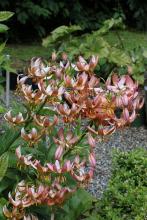
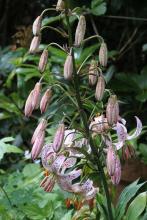
Arisaema jacquemontii raised from seed. 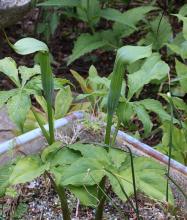
Heuchera ,(or is it x Heucherella ? --I can't remember ![]() ), have such a long flowering period --they just go on and on........
), have such a long flowering period --they just go on and on........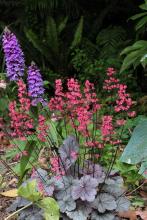
A couple of late flowers on Cornus canadensis.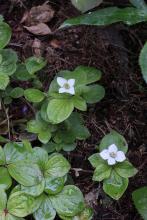
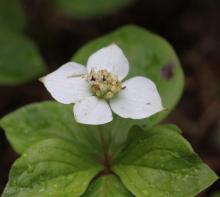
Cheers Dave.
Not the plants I connect with
Not the plants I connect with Christmas but very nice and homely - in 6 months I can see them in my own garden!
Just a shrub or two in flower here at home now although the weather is very mild for the season. A storm is brewing and expected to hit tomorrow!
Arisaema consanguineum
Lilium pardalinum .Looks like the clump needs dividing as there is a mass of vegetation and only a couple of blooms .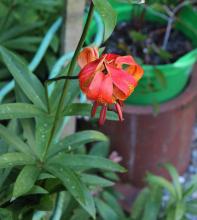
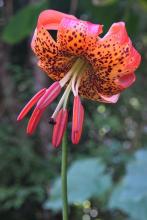
Happy New Year everyone.![]()
Cheers Dave.
This Zauschneria came from a
This Zauschneria came from a friend who couldn't give it a full botanical name but did recommend it for a hot spot in the garden where it's doing very well!
cheers
fermi
Looks lovely Fermi.
Looks lovely Fermi.
Really nice one Fermi, I'm
Really nice one Fermi, I'm not expert in the Zauschneria species (now Epilobium, although most everyone still calls them Zauschneria), but this one might be Z. canum, judging from the very silvery foliage. Lovely plant, but keep an eye on it for spreading tendencies.
In my attempt to overhaul parts of my garden this past summer and fall, I made a half-hearted attempt to rip out Z. garrettii; just too much spread (it romped to about 2 meters x 2 meters), smothering everything around it. I noticed several weeks later billions of fresh shoots coming up, oh my! This one can be nice if given enough room, with soft greyish green foliage, but often stingy with its orangish-red flowers in late summer and autumn.
Thanks, Dave and Mark,
Thanks, Dave and Mark,
I'm well aware of its spreading abilities, having had one "colonize" an entire (1m x 2m) rock mound in a previous garden! ![]()
This one has only been in the ground 2 years and has not yet shown any tendency to sucker.
Yesterday while driving home on the "back road" (the Burke & Wills Track) we saw a patch of vibrant blue which we knew would be the native "Blue Devil", Eryngium ovinum. I didn't have the camera but plucked a couple of spikey stems to bring home (hopefully some seed will ripen!) and I got a pic this morning against the cultivated E. planum (or is it E. maritimum?) - the more vivid amethyst coloring of the wilding is quite eye-catching and I hope we can establish it despite the risk to finger-tips when weeding around it!
cheers
fermi
Hi Fermi, so which is which,
Hi Fermi, so which is which, I can't tell which photo is E. ovinum and which is E. planum, they're not identified.
Looks like <i>E. planum</i>
Looks like E. planum is in the background of the first photo, with a cut stem of the other one in the foreground, no?
Lori S. wrote:
[quote=Lori S.]
Looks like E. planum is in the background of the first photo, with a cut stem of the other one in the foreground, no?
[/quote]
Yes, Lori, the E.ovinum is the bright amethyst color in the foreground of the first pic and by itself in the second pic.
Mark,
for some reason when I post pics from the home PC the labels don't appear when you hover the mouse over the pic! I think it has something to do with the server we use as you suggested on another thread. (labels now added!)
cheers
fermi
Fermi, in order for that
Fermi, in order for that feature to work, you have to fill the plant name into the "Title" slot when loading the photo (or you can go back and "Edit" to do it - with my moderator superpowers, I can see that it was not done in your posting).
Fermi, if I remember
Fermi, if I remember correctly, I think it might have something to do with what internet Browser you're using, and what version. Are you using a different internet browsers (and/or different versions) on your home PC? That might account for the "title text" not showing up as "mouse-over titles".
And thanks Lori for spotting what I failed to spot, in seeing both Eryngium species, I'm going to blame it on aging eyes.![]()
But Mark, doesn't the plant
But Mark, doesn't the plant name have to be typed into the "Title" slot for the "mousing-over" to work? (If not, where is it reading the plant name from?)
Hope those of you folks who
Hope those of you folks who are in the Mid States and Eastern seaboard are coping okay with the big chill.
Here's a bit of colour from the garden this afternoon.
Freesia ,(Syn Anomatheca ), laxa' Joan Evans and close up.
A repeat blooming on Pulsatilla 'pink denim' which I understand comes true from seed.
I moved a bulb of Lilium duchartrei last year ? and promptly forgot where I planted it .Probably needs moved again as it's leaning out from behind a Paeony ......![]()
![]()
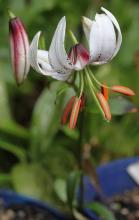
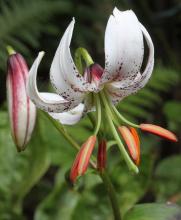
Lori S. wrote:
[quote=Lori S.]
But Mark, doesn't the plant name have to be typed into the "Title" slot for the "mousing-over" to work? (If not, where is it reading the plant name from?)
[/quote]
Yes Lori, but maybe the typed in text just isn't making it into the "published" message. I have also gone into Edit Mode on user's messages, their photos do have "mouse-over" titles working, but in Edit Mode they don't show up in the Title Text or Alternate Text fields, so they are "cached" into the posted image but not showing as such when in Edit Mode. We'll just have to add these anomalies to the list.
Another thing to take note of, if one forgets to add Title Text, getting back into Edit Mode and adding the forgotten Title Text, will not by itself update the photo. To actually get the change to take effect, one adds the Title Text (or edits the field to make a change, or whatever), then go back to the text window, find the image, highlight and delete it, make sure cursor is positioned where you want the updated version of the image to appear, and hit Insert to place the image with the associated Title text.
Lovely plants Dave, they are
Lovely plants Dave, they are indeed nice to see given that we are in a prolonged deep freeze, with nights going down to 0 F (-17 C) and days only getting up to about 10 F (-12 F), and a glacier-like crust of rock hard snow and ice.
The pink Pulsatilla is a lovely color, and I always enjoy the silky-haired leaves on these, must grow more of them. I do have a wonderful true red form of vulgaris, although it doesn't have the degree of silkiness found in so many Pulsatilla species and cultivars. Your photo series also reminds me that I'm remiss in not yet growing Arisaema candidissimum, such a beauty.
A nice reddish brown hue on
A nice reddish brown hue on the L. duchartrei, Dave. I mostly have greenish types now. and still morn the loss of my best form (of course) that had unadulterated colors of green, milk chocolate and white.
You all down under are keeping us all "up over" well engaged through the winter. Thanks everyone!
I've never experienced temps
Thanks Mark.
I've never experienced temps where the high for the day is -12C Brrr.The open farm areas around here might reach -8 overnight however temps climb quickly and the ground frost is gone by late morning with day highs of 9C.
Interestingly the Arisaema I've shown comes into bloom well after others elsewhere in the garden with flowers appearing to be larger especially wider in the spathe --not sure whether it's because I tend to hand feed the trough that it is in with sheep manure pellets.
On another matter I see i have doubled up on the close up pictures of Freesia laxa.I thought I had deleted the second pic with the spelling errors .Would one of the Moderators delete that pic please.![]()
RickR wrote:
[quote=RickR]
A nice reddish brown hue on the L. duchartrei, Dave. I mostly have greenish types now. and still morn the loss of my best form (of course) that had unadulterated colors of green, milk chocolate and white.
You all down under are keeping us all "up over" well engaged through the winter. Thanks everyone!
[/quote]
Thanks Rick
I raised the L.duchartrei from seed and at it's first flowering I wondered because of the reddish hue whether it was L.Lankongense.........
Toole wrote:
[quote=Toole]
A repeat blooming on Pulsatilla 'pink denim' which I understand comes true from seed
[/quote]
Some nice stuff there, Dave.
And you say this Pulsatilla comes true from seed? How interesting![]()
Your Lilium duchartrei looks true and is a delight! The unknown Asiatic is one of the "brushmark" types but not one that I know,
cheers
fermi
The Lilium duchartrei looks
The Lilium duchartrei looks true to me, also. According to Flora of China, duchartrei can have a redish tone, and there are some nice wild pics that bare it out.
http://efloras.org/florataxon.aspx?flora_id=2&taxon_id=200027714
Supposedly, it should be easy to tell with age, as duchartrei has umbels and lankongense has reacemes. Although, I am not sure how reliable this is. Some other individual lilium species seem to produce both. There are some other differences posed by the FOC, too.
All my L. duchartrei are from seed too, and most have not grown large enough to observe the true inflorescense structure. Even this one does not perfectly fit, for example:
Nice to see the flowers
Nice to see the flowers although it is on the other side of the world! Reminds me that is not so long till spring here![]()
Thanks for the further
Thanks for the further confirmation on my Lilium duchartrei guys.
Fermi I'll keep a look out for seed on Pulsatilla 'pink denim' however there was no seed set from it's earlier blooming.
Your spring means our autumn Trond......![]()
Been a very wet last 3 weeks with temps mainly cool ,meaning there is still a bit of colour about.
Here's the pure white flowers of Codonopsis grey -wilsonii ' himal snow'.
A repeat blooming of Primula modesta.
From seed, Veratrum viride and close up.
Prickly leaved Dianthus erinaceus and close up.The trough is situated in part shade so the cushion is not as tight as it should be .
Cheers Dave.
Dave, I am smitten with
Dave, I am smitten with Veratrum viride, green flowers are so cool. How tall does your plant grow? I intend on growing more species of this genus.
Mark McD wrote:
[quote=Mark McD]
Dave, I am smitten with Veratrum viride, green flowers are so cool. How tall does your plant grow? I intend on growing more species of this genus.
[/quote]
The plant reaches just over 1 metre in height Mark .
Some other Veratrums, namely V.album ,nigrum and formosanum are also currently in flower here however I consider V.viride to be the most attractive of the bunch.......Hopefully it will set seed.![]() .
.
How long did Veratrum viride
How long did Veratrum viride take from seed? We grew V. nigrum and it must have taken 7 or 8 years before flowering. As a nursery plant they are very difficult to get a fair return for but they are stunning plants in the garden. I think there is also a good yellow form of Veratrum album, and if you grow these you should also try Gentiana lutea. Really statuesque and exciting plants!
Mark McD wrote:
[quote=Mark McD]
Dave, I am smitten with Veratrum viride, green flowers are so cool. How tall does your plant grow? I intend on growing more species of this genus.
[/quote]
I remember transplanting a few wild Veratrum viride into the family garden many years ago in New Brunswick (Canada). Just checked the USDA plant profile for it,
http://plants.usda.gov/core/profile?symbol=VEVI and it seems they haven't received reports from Nova Scotia. Will have to keep my eyes out for it when hiking this summer, in case it is actually here (which I suspect to be true). Mark, you may be able to find it in Massachusetts.
Tim Ingram wrote:
[quote=Tim Ingram]
How long did Veratrum viride take from seed? We grew V. nigrum and it must have taken 7 or 8 years before flowering. As a nursery plant they are very difficult to get a fair return for but they are stunning plants in the garden. I think there is also a good yellow form of Veratrum album, and if you grow these you should also try Gentiana lutea. Really statuesque and exciting plants!
[/quote]
Hello Tim my records show seed was sown in 2006.
V.nigrum has proven to be a good grower here so much so I've managed to divide the mature clump a couple of times.
Here's a close up pic of the flowers of what I raised as V.californicum , however I have a suspicion it is V.album.Again this plant has been divided .
Going incognito don't seem to
Going incognito don't seem to harm them!
Nice lilies, Dave.
Nice lilies, Dave.
We're in the middle of another heat wave! But the Urginea maritima seems to enjoy it, coming up to bloom despite a lack of watering in its vicinity. This year there's even a second spike,
cheers
fermi
Just 6 months behind me (or
Just 6 months behind me (or in front of)me if you prefer!). My Waterlilies don't flower before October!
I like that Tricyrtis macrantha, didn't know they were that relaxed![]() Nice flowers too.
Nice flowers too.
Thanks Trond .
Thanks Trond .
Just seen yours,( and Gerrit's ),pics and comments in the International Rock Gardener e-magazine of your South American trip ![]() .The plants and scenery are absolutely superb.
.The plants and scenery are absolutely superb. ![]() .Well done.
.Well done.
Gee I 'gotta' get there .....![]()
Cheers Dave,
Thank you Dave, glad you
Thank you Dave, glad you liked it.
The trip was very exiting and I wanna go back there!
Lucky for you, Trond, you can
Lucky for you, Trond, you can visit South America when it's your winter!
It's too risky to leave our garden at that time of year![]()
In flower now in our garden, Sternbergia lutea,
cheers
fermi
Missed out on the Forum for a
Missed out on the Forum for a little while but i do like Trycyrtis macrantha flowering in that deep pot - must try and copy that. On the whole they struggle through our hot summers and of course are caviar to molluscs too, but that looks a neat way of overcoming this if I can find a suitable chimney-pot. Like the Urgenia too; I've never actually come across this in a garden.
Yesterday morning I spotted
Yesterday morning I spotted these three lurking in the garden and they were still there today! Garden Gnomes - Biarum davisii![]()
cheers
fermi
Fermi, that's fabulous, love
Fermi, that's fabulous, love the middle photo, like a stream of yellow. Love the Biarum too.
Mark McD wrote:
[quote=Mark McD]
Fermi, that's fabulous, love the middle photo, like a stream of yellow. Love the Biarum too.
[/quote]
Thanks, Mark,
they seem to do well here![]()
They were grown from seed so there's some natural variation with some having thinner petals (sepals) giving a starry appearance,
cheers
fermi
Another yellow autumn
Another yellow autumn flowering bulb is Ipheion hirtellum (syn Nothoscordum hirtellum)
cheers
fermi
Have to second Mark! And it
Have to second Mark! And it is obvious that the climate of Central Victoria, Australia, is very different from mine! Autumn flowering bulbs are usually no success here.
What about Oxalis lobata (syn
What about Oxalis lobata (syn perdicaria), Trond? Or crocus?
cheers
fermi
Wouldn't mind growing that
Wouldn't mind growing that Oxalis!
But Crocuses are over for this season![]()
A few images from the weekend
A few images from the weekend.
Fungi.
Gladiolus priorii.
Cyclamen are starting to show colour.
Eranthis Cyclamen coum
Corydalis hybrid that's continued to flower so far all through our mild winter
Spring flowers are always
Spring flowers are always welcome! (But as I mentioned in another thread I am glad it still is a few months away!)
Although I also experience mild winters (not as mild as yours though Dave) I couldn't grow plants like that in December because the level of light is too low.
So many good plants flowering
So many good plants flowering in Australia and New Zealand already - makes you wonder what will be left for the "real Spring" .....Yikes!
IMYoung wrote:
[quote=IMYoung]
So many good plants flowering in Australia and New Zealand already - makes you wonder what will be left for the "real Spring" .....Yikes!
[/quote]
Yes, it's always interesting to see what's in flower for the various Flower Shows! The next FCHS Show is on September 6 and 7 - some years there can be many less daffodils - either being too early or too late!
Here are some pics from our recent AGS Vic Group meeting,
cheers
fermi
IMYoung wrote:
[quote=IMYoung]
So many good plants flowering in Australia and New Zealand already - makes you wonder what will be left for the "real Spring" .....Yikes!
[/quote]
There is still plenty to follow Maggi .........Hopefully ! ![]()
The mainstay of colour at the moment are the Hellebores.Here's a small selection for the moment .I'll post the rest in a day or two.
Hope you're right, t00lie -
Hope you're right, t00lie - Ian the Christie kind wants plenty to see on his next visit !
IMYoung wrote:
[quote=IMYoung]
Hope you're right, t00lie - Ian the Christie kind wants plenty to see on his next visit !
[/quote]
![]()
Early Trilliums 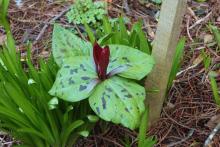
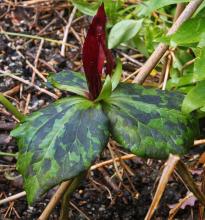
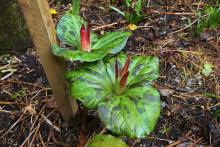 A lovely Narcissus hybrid
A lovely Narcissus hybrid 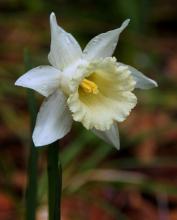
More Narcissus raised from seed. 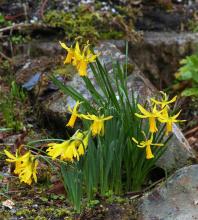
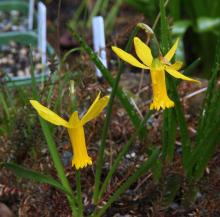
Maggi,
Maggi,
there'll still be plenty for Ian (the Christie kind) to see when he visits (I think he intends stopping here on the way to NZ) - but this is the "busy" time of the year for flowers!
Here's the best flowering I've had on Moraea macronyx
Only when I was pollinating them I realized that there were 2 types of flowers - the usual one seems to have brown marks on the yellow crest whereas on one plant they are absent! As these were grown from seed I guess it's just variation within the species,
Also in flower amongst the pots, was this Mediterranean romulea from the Canary Islands, Romulea hartungii (syn R. grandiscapa)
And from South America, this yellow ipheion, now called Nothoscordum felipponei,
cheers
fermi
Stunning Moraea, fermi.
Stunning Moraea, fermi.
Good to hear you are confident on having some flowers left for Ann and Ian on their travels - they are already looking forward to the trip !
Ian will be appearing at the NZAGS Study Day of course - see details here : www.nzags.com
Tulipa bakeri's first flower
Tulipa bakeri's first flower this year
Gagea fibrosa
A bed in the garden with some daffs at its base - Narcissus 'Kedron; (orange) and 'Sailboat' and way too many euphorbias!
cheers
fermi
"......and way too many
"......and way too many euphorbias!"
Oh dear, I read that as too many euphorias ....thought you were protesting too much!
Not to self: pay proper attention to reading. ![]()
IMYoung wrote:
[quote=IMYoung]
"......and way too many euphorbias!"
Oh dear, I read that as too many euphorias ....
[/quote]
That happens too with all the flowers at this time of year![]()
For example, these Romulea sabulosa have been flowering all month!
I love the satin sheen to the petals when the sun hits them,
cheers
fermi
I grew this little sweetie
I grew this little sweetie from AGS Seedex 2008 seed as Muscari "ex Gul" - "Gul" was a selection made by Rannweig Wallis, but I believe it has been re-named 'Gul Delight'
cheers
fermi
Fermi wrote:
[quote=Fermi]
I grew this little sweetie from AGS Seedex 2008 seed as Muscari "ex Gul" - "Gul" was a selection made by Rannweig Wallis, but I believe it has been re-named 'Gul Delight'
cheers
fermi
[/quote]
I have something similar Fermi in an unlabeled pot...(I'll use your foliage shot to try and hopefully locate it ....![]() )
)
Here's a nice clump of Corydalis x 'George Baker' originally from seed. 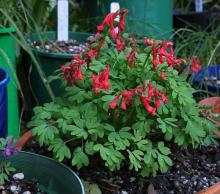
Threw some used potting mix
Threw some used potting mix on the surface of a pot of Shortia glacifolia a few months ago and it's rewarded me by at least doubling the number of flowers this season.......
Toole wrote:
[quote=Toole]
Threw some used potting mix on the surface of a pot of Shortia glacifolia a few months ago and it's rewarded me by at least doubling the number of flowers this season.......[/quote]
Good work, Dave,
and it looks like a couple of monocot seedlings have germinated out of the used potting mix!
There are still daffs coming into flower here but the tulips are making their presence felt! Here is Tulipa kolpakowskiana
Tulipa clusiana
cheers
fermi
Lovely Tulipa clusiana Fermi
Lovely Tulipa clusiana Fermi .
Here's a young plant of Primula aureata growing in the cool crevice bed.
Been an extremely mild start
Been an extremely mild start to winter down here in New Zealand. Reached 18c today and we are yet to experience a frost in our patch although there is a bit of white stuff appearing in the garden .......
Very nice Fermi --I have
Very nice Fermi --I have quite a few Galanthus in bud and fingers crossed ,hopefully G.'Wendy's Gold' will show some colour in the next week or so.
A number of hellebores are in currently in flower ......Here's small sample.A couple of 3 year old seedlings look like they will have their first bloom...
Some very attractive forms
Some very attractive forms there, Dave.
In our winter garden we have a couple of Sternbergia candida open and the promise of more to follow,
A dwarf bearded iris has overgrown the bulbs and provide some protection from summer rain ....and echidnas!
A true crocus which is in flower in a pot is Crocus rujanensis, grown from seed from NZAGS
cheers
fermi
A clump of Acis tingitana
A clump of Acis tingitana flowering now in the rock garden
The Juno Iris planifolia is in bloom in a sandy, raised bed,
cheers
fermi
In our garden this afternoon,
In our garden this afternoon, a young plant of a dryandra which is now included in Banksia, but I can't find the species name!
cheers
fermi
Banksia dryandroides by any
Banksia dryandroides by any chance? (he says without any knowledge at all!)
https://en.wikipedia.org/wiki/Banksia_dryandroides
Nice Banksia Fermi
Nice Banksia Fermi
Our local botanical park has a small number of different species growing in the Australian Border ,(of course..Lol),however nothing like your 'model' above......
A few plants in flower here with Galanthus making a show, the best to my mind being a NZ selection G.elwesii Emerald Hughes which has large flowers and quick to clump.Unfortunately I'm always lifting and planting side bulbs elsewhere in the garden so the clumps don't reach a reasonable size.....
Promise of things to come .Scoliopus bigelovii in bud and with a sunny 14c forecast tomorrow some should open.
Cheers Dave.
Toole wrote:
[quote=Toole]
A few plants in flower here with Galanthus making a show, the best to my mind being a NZ selection G.elwesii Emerald Hughes which has large flowers and quick to clump.
[/quote]
Hi Dave,
I wonder if that selection has made it across to "the West Island"? G. elwesii seems to do the best in our garden, but a few others are established like this one which I thought might be Galanthus plicatus but Anthony on SRGC Forum has asked "is it?" - I don't know, I'm not a galanthophile!
cheers
fermi
I'm no 'drop fiend either,
I'm no 'drop fiend either, fermi - but the foliage looks plicate to me- but I suppose it may be a hybrid? I've sought advice from a real galanthophile, to see what she has to say!
Emma Thick thinks it's a
Emma Thick thinks it's a plicatus..... in the absence of a photo to show how the leaves are arranged. Marcus Harvey thinks it may be a hybrid.
I can't remember whether G
I can't remember whether G.elwesii Emerald Hughes sets seed in our garden Fermi however I'll keep a look out for you in a few weeks if you like.
Here's some more 'white fever' .The first 3 pics show some variations in one pot of G.elwesii received from a good friend.
Followed by G.nivalis 'Viridapice' and close up , which is another terrific increaser here.
Sorry the rest I've forgotten the names of ....... 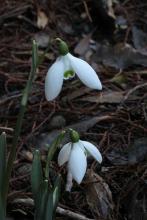
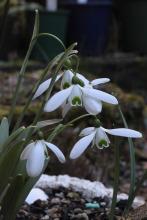
Cheers Dave.
A couple more Hellebores are
A couple more Hellebores are out .
Thought I had managed to collect all the seed set last year however while cutting back the old leaves a few days ago I located heaps of seedlings in a number of beds .....
This little fella has finally opened .Scoliopus bigelovii .I'll try and move a bit of pollen around once another flower comes into bloom in the hope a little seed is produced.
Cheers Dave.
Lovely! Wonderful to have
Lovely! Wonderful to have them self-seeding!
The Scoliopus is an amazing thing... I expect it's not likely hardy here though.
Lori S. wrote:
[quote=Lori S.]
Lovely! Wonderful to have them self-seeding!
The Scoliopus is an amazing thing... I expect it's not likely hardy here though.
[/quote]
Thanks Lori
Not sure about the Scoliopus as it's a woodlander from California.
Are Hellebores hardy with you ?.
A small number of hellebores
A small number of hellebores have been hardy here for some years now and I planted a few more last year.
Lori S. wrote:
[quote=Lori S.]
A small number of hellebores have been hardy here for some years now and I planted a few more last year.
[/quote]
I'll P.M. you Lori
Saxifraga grisbachii 'Wisley
Saxifraga grisebachii 'Wisley Variety' in the crevice sand bed is on the move.What a wonderful colour combination of beautiful silver rosettes with the commencement of furry ruby pink stems.

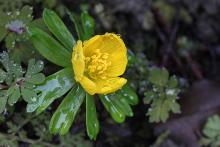
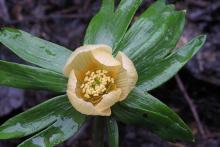
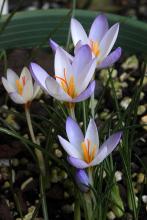
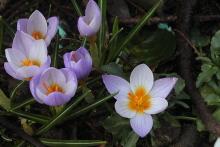
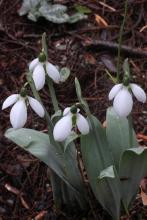
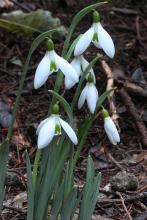
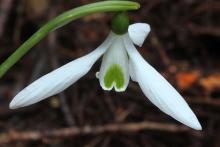
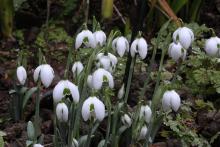
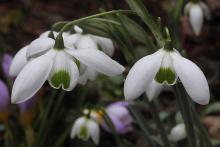
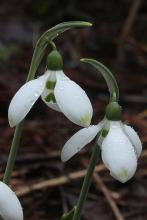
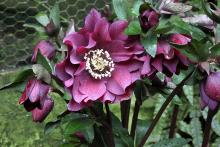
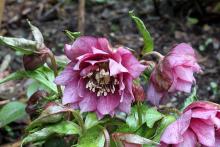
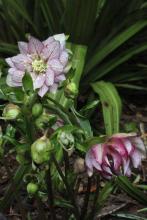
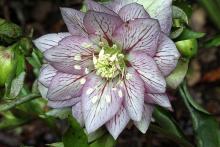
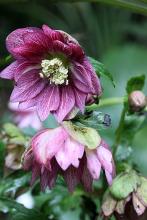
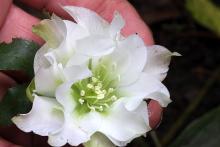
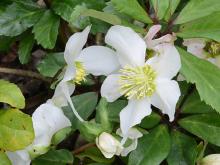
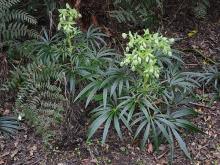
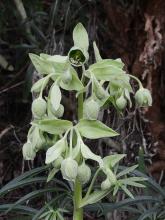
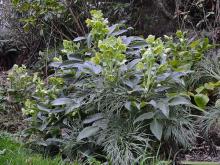
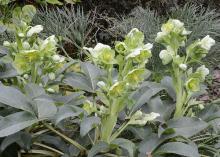
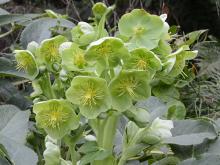
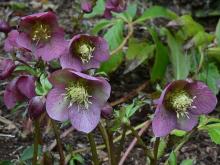
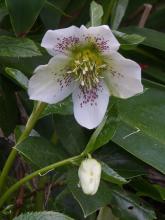
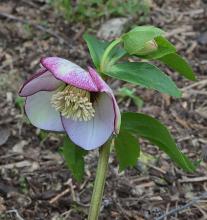
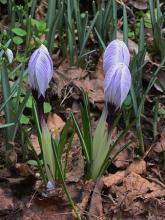
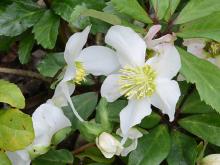
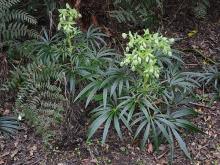
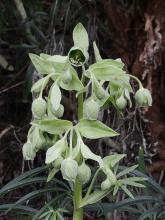
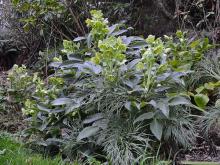
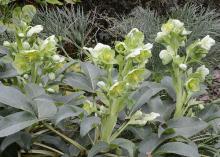
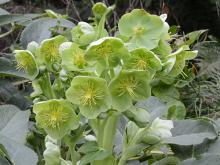
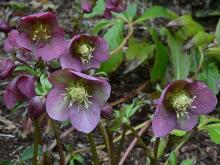
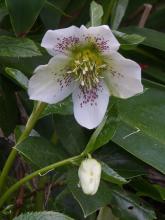
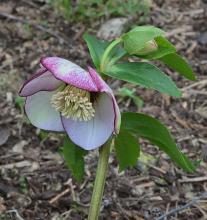
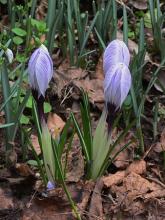
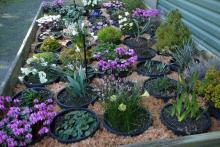
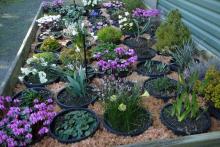
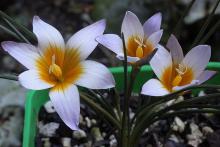
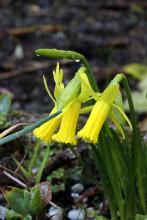
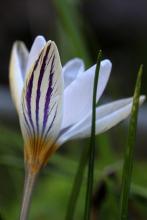
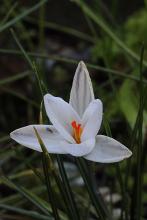
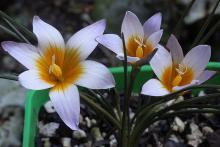
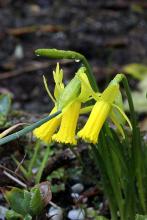
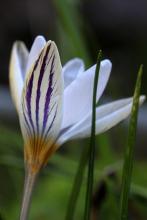
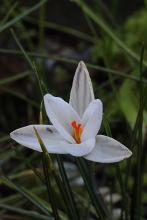
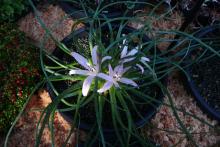
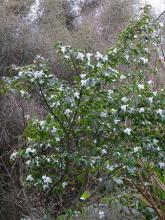
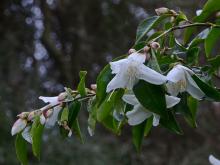
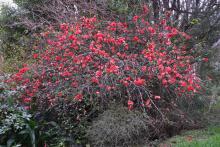
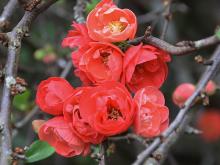
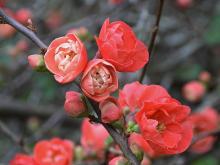
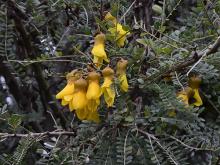
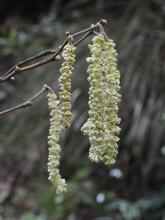
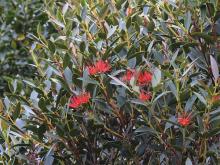
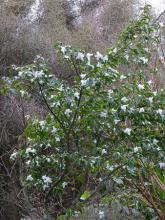
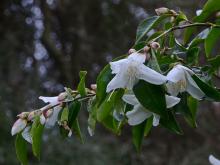
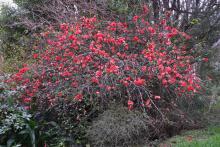
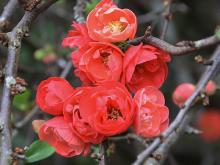
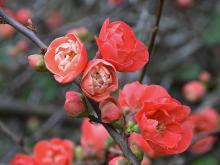
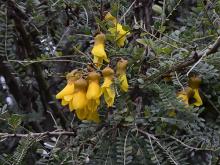
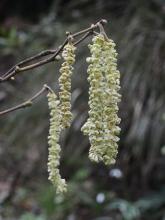
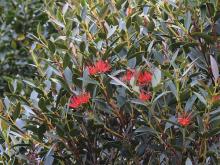
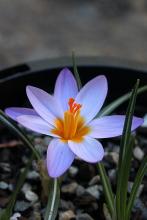
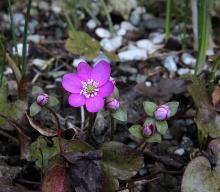
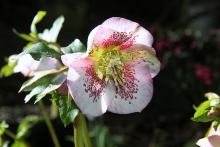
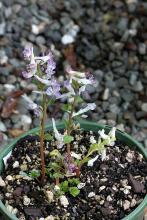

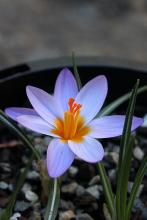
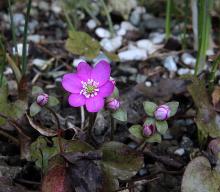
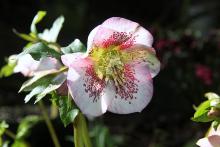
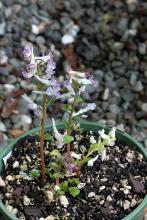
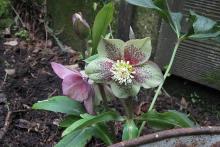
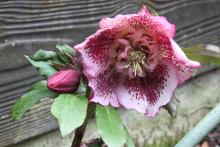
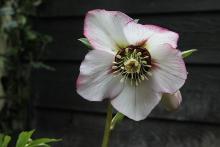
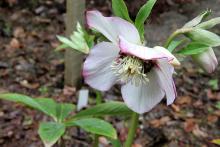
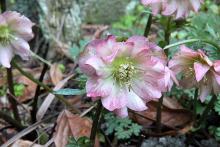
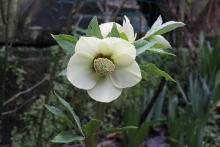
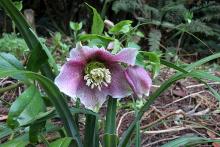
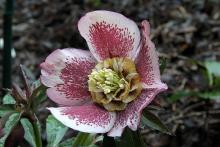
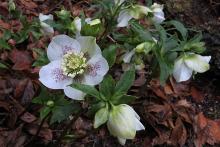
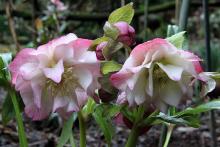
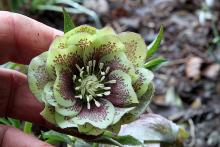
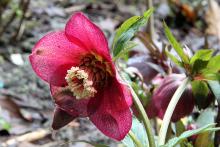
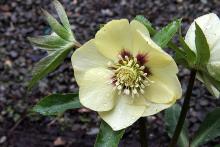
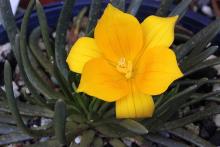
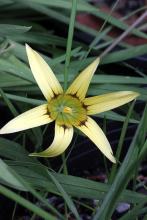
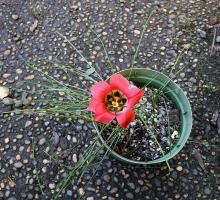
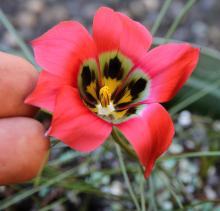
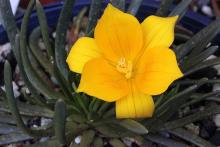
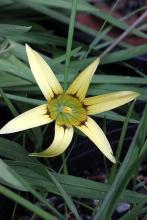
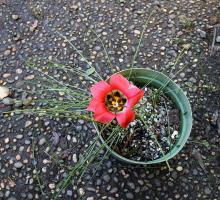
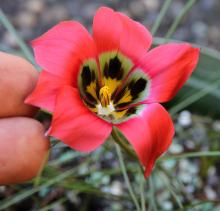
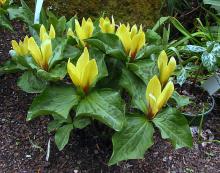
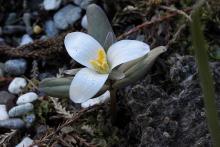
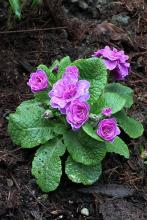
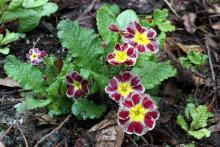
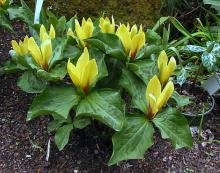
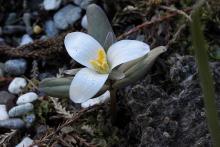
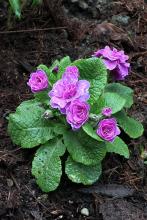
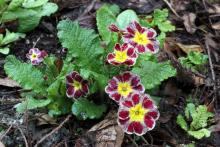
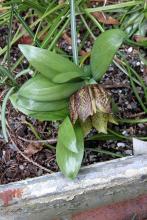
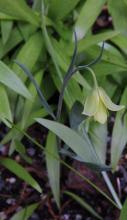
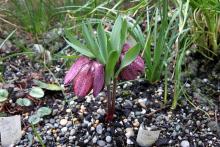
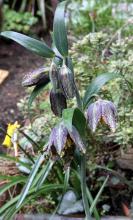
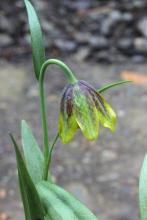
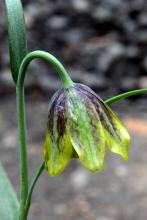
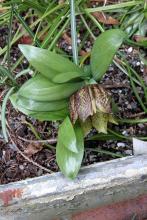
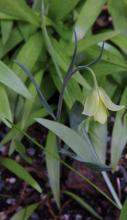
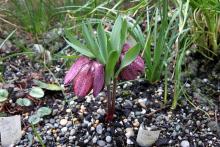
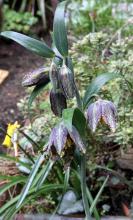
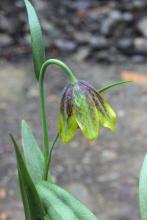
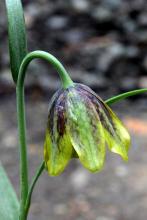
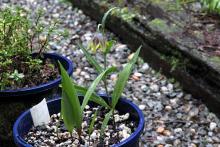
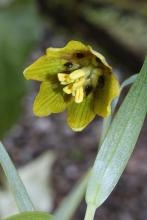
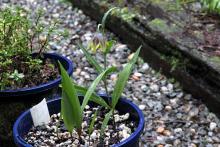
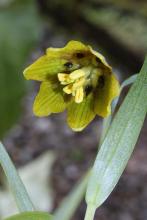
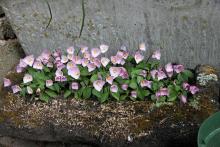
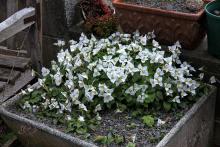
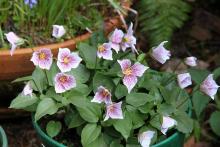


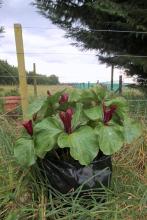
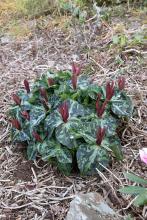
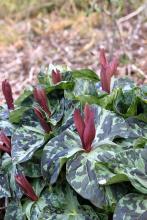
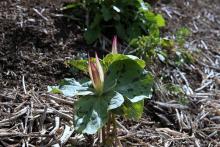
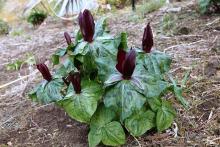
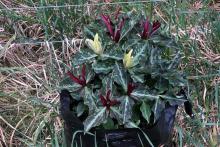
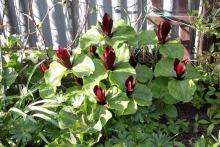
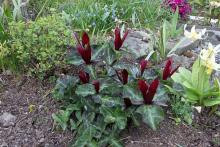
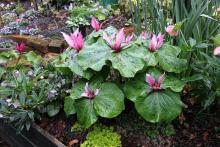
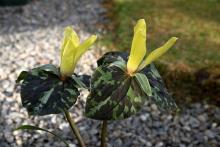
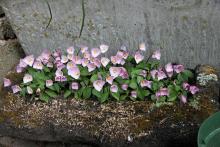
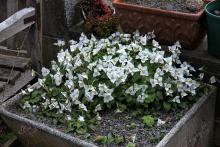
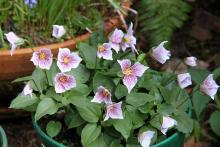
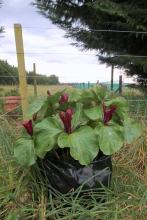
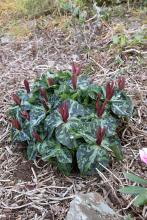
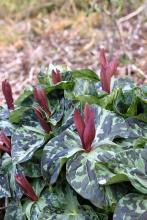
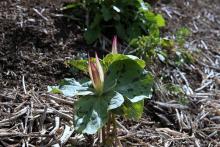
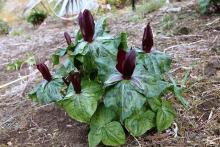
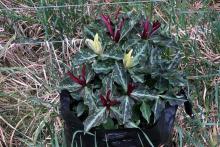
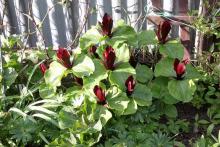
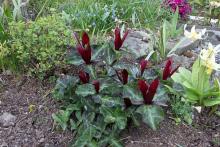
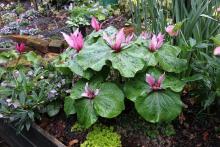
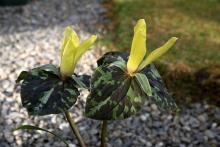
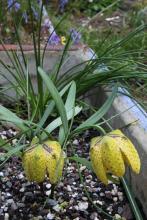
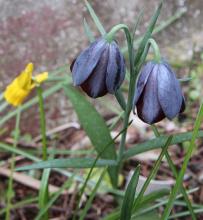
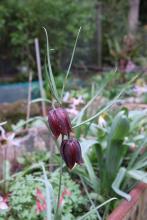
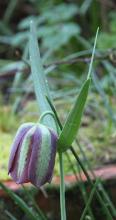
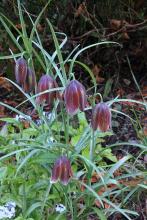
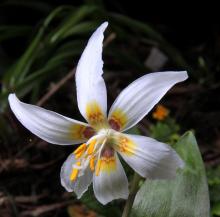
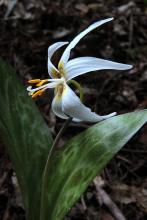
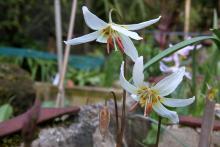
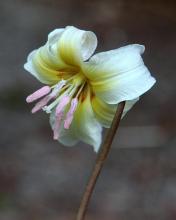
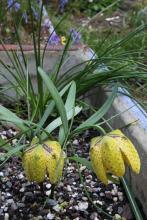
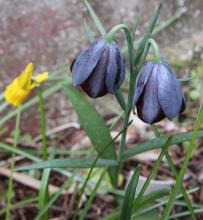
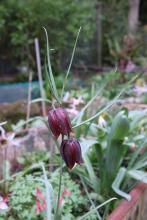
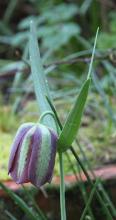
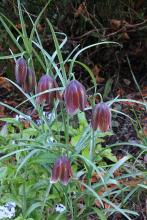
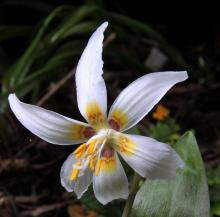
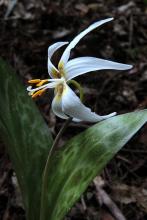
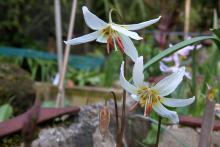
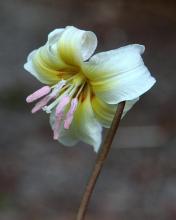
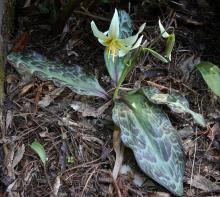
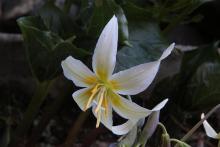
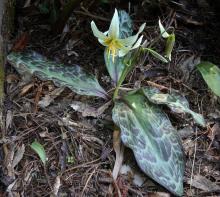
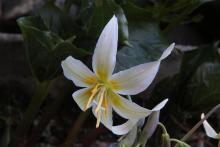
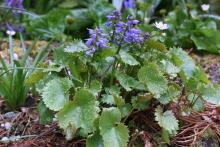
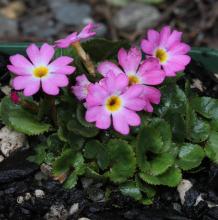
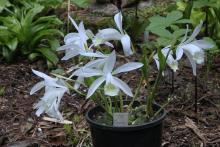
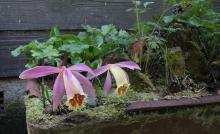
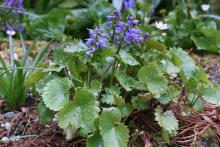
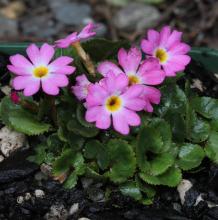
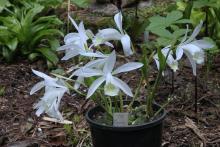
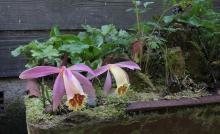
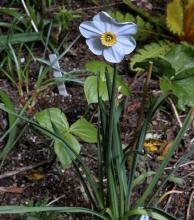
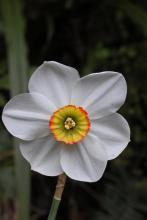
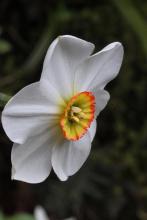
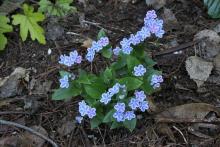
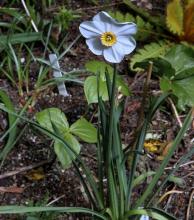
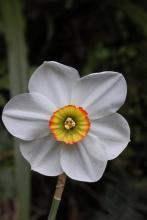
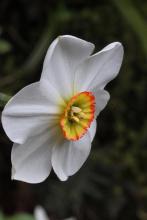
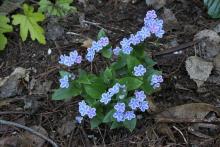
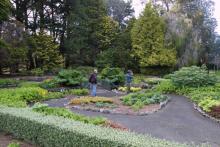
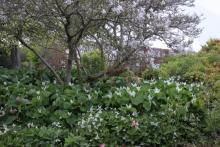
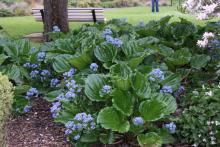
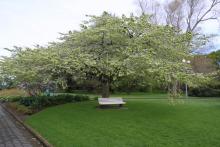
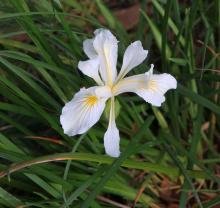
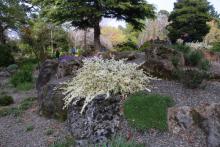
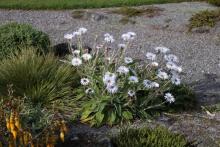
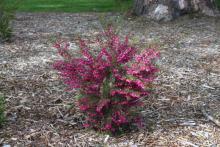
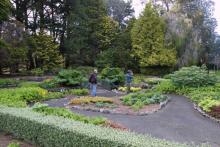
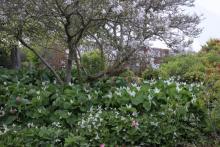
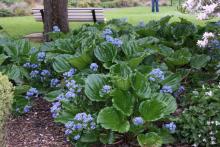
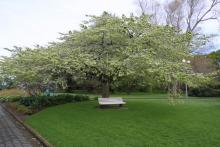
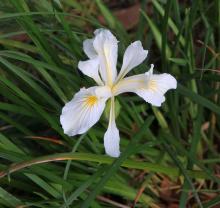
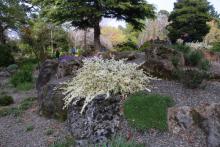
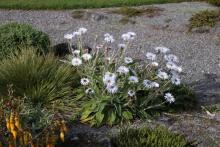
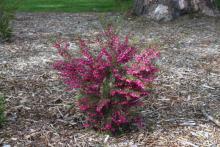
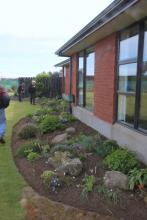
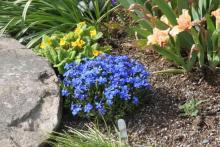
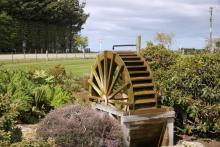


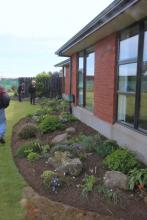
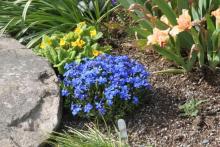
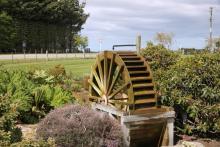


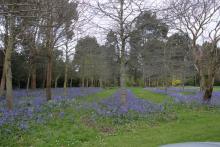
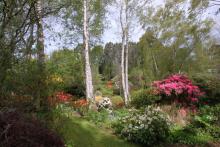

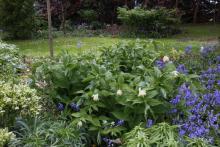
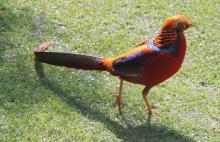
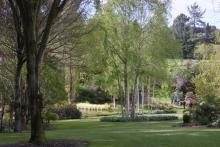
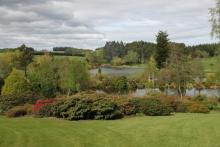
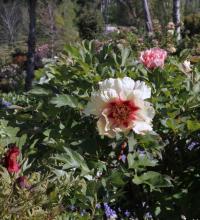
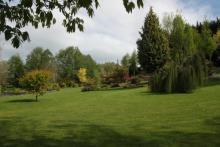
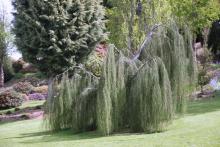
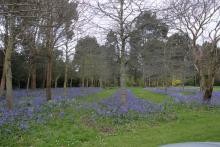
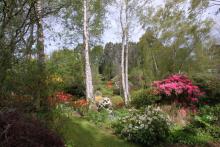

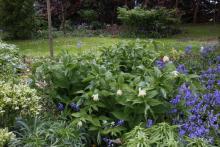
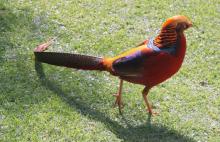
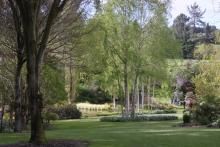
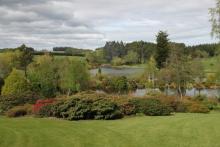
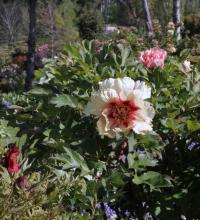
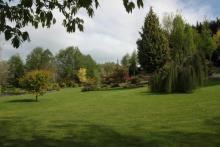
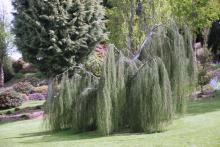
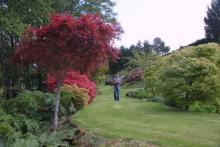
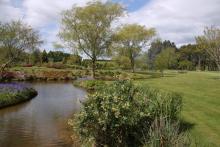
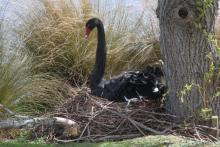
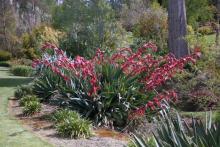
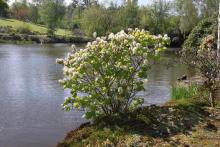
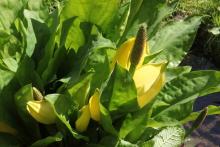
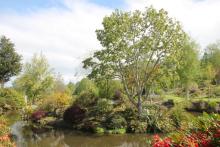
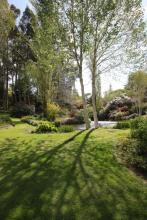
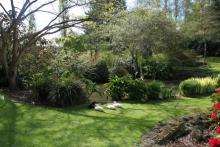
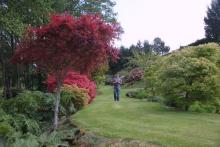
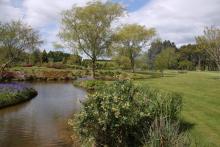
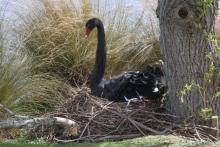
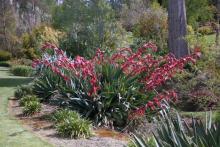
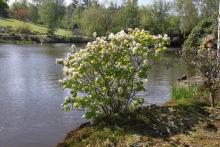
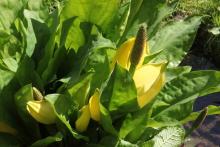
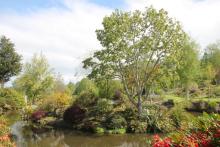
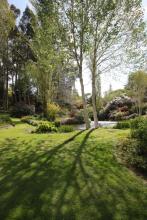
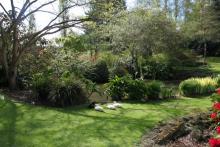
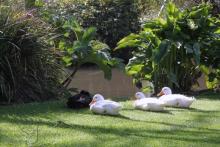
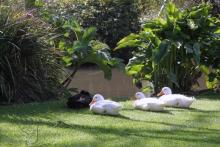
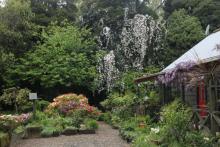
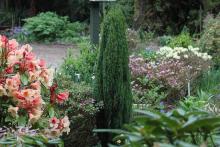
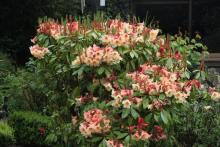
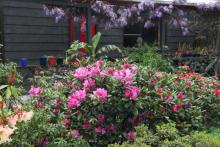
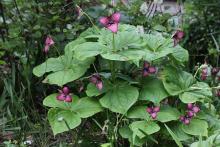
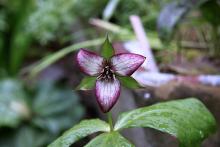
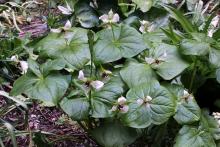
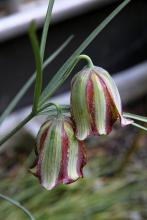
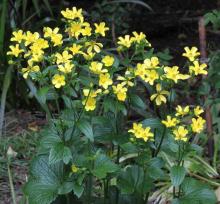
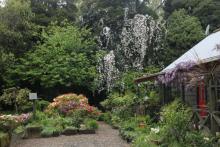
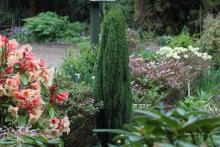
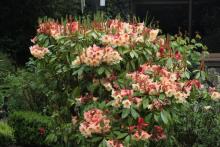
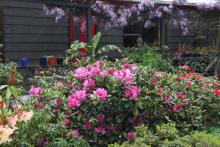
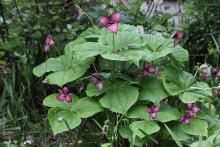
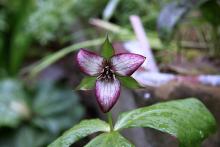
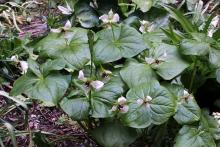
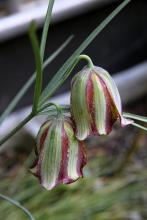
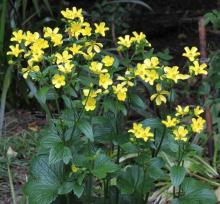
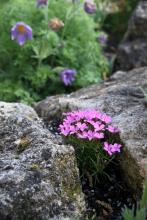
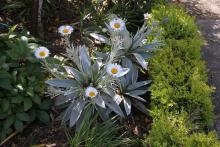
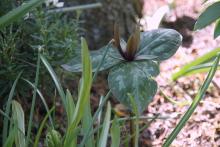
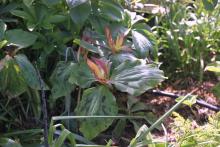
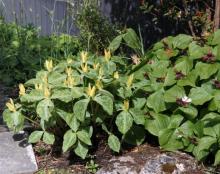
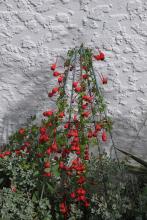
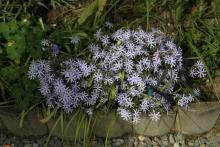
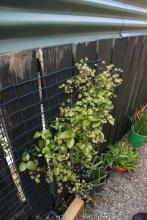
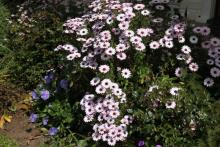
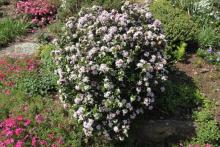
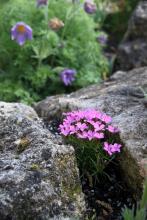
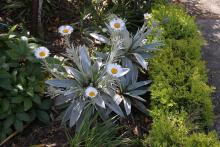
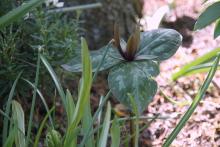
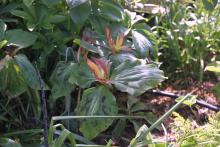
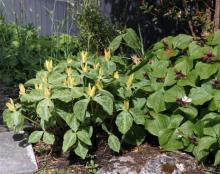
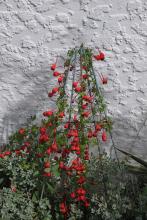
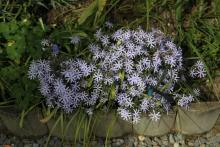
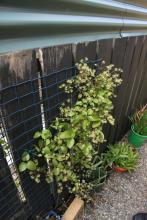
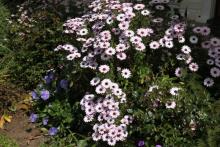
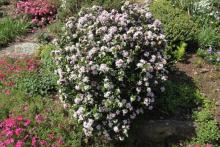
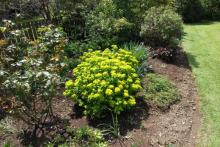

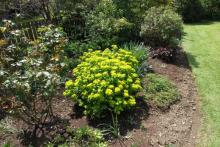


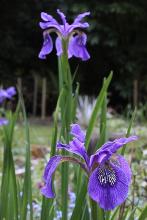
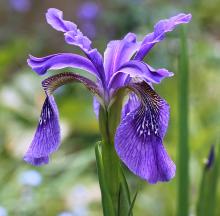
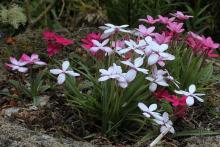
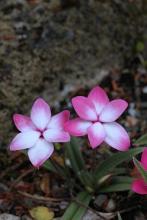
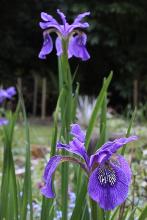
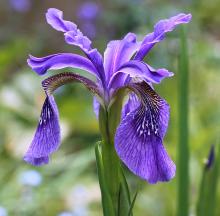
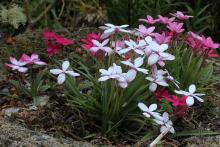
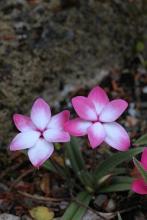
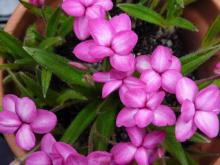
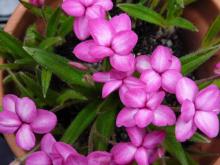
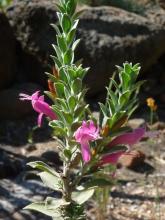
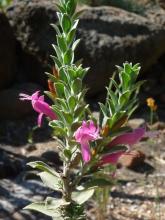
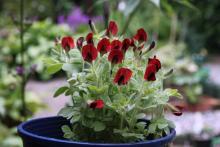
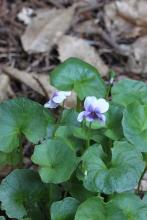
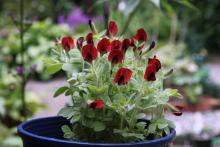
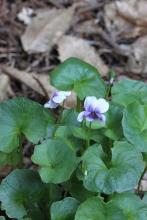
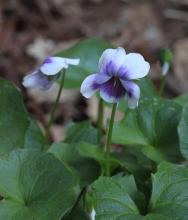
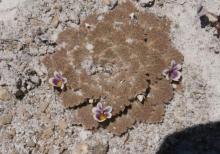
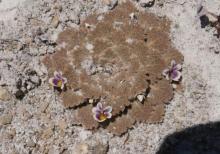
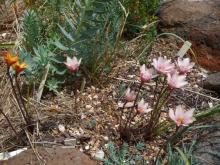
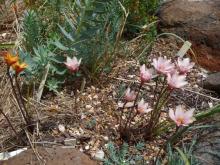
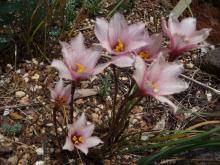
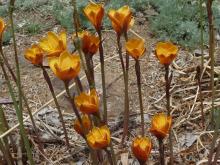
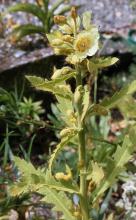
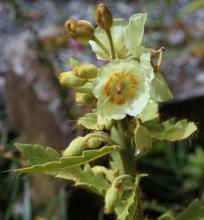
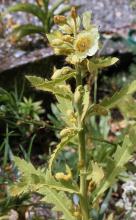
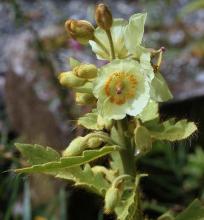
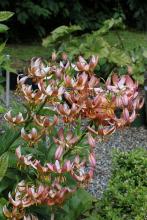
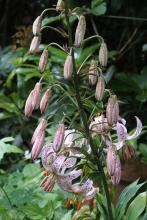
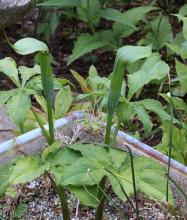
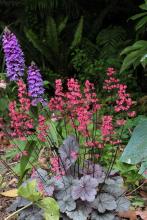
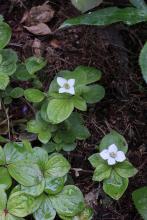
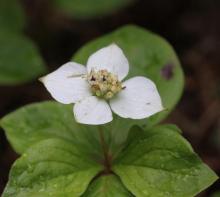
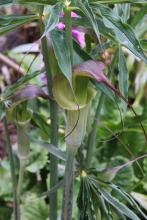
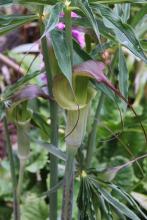
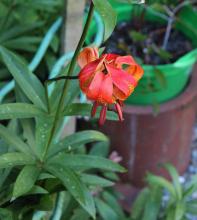
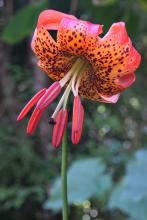
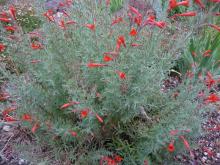
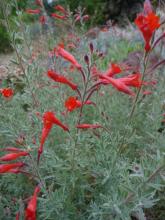
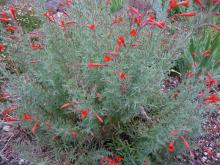
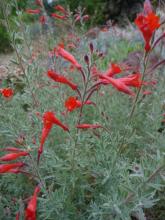
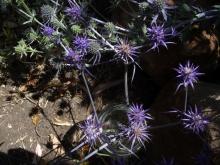
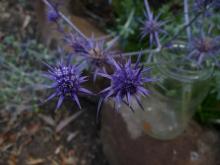
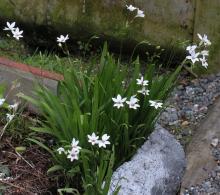
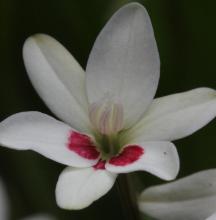
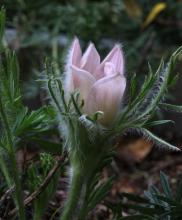
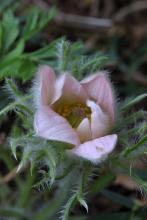
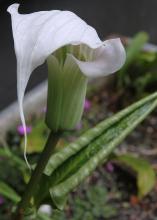
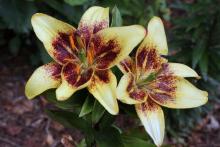
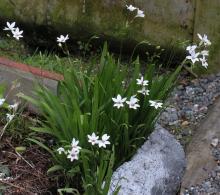
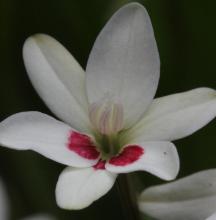
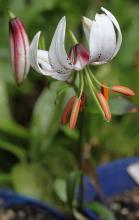
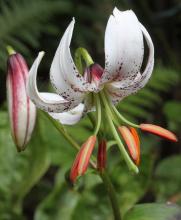
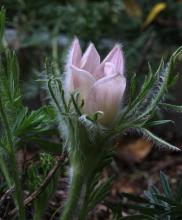
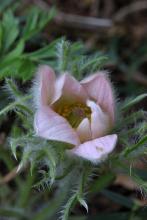
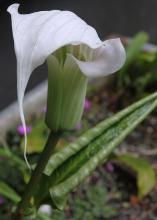
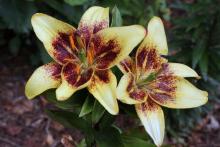
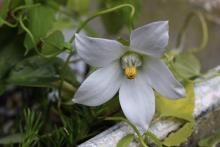
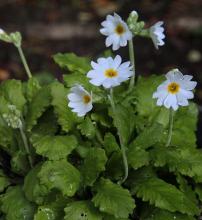
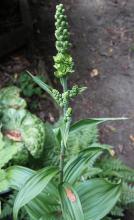
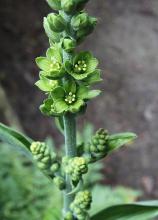
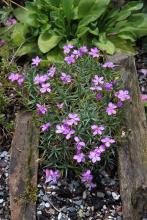
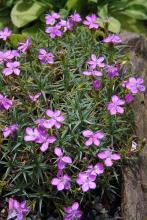
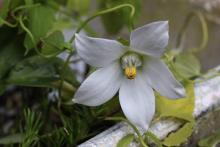
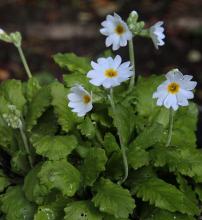
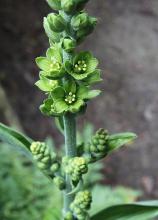
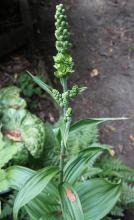
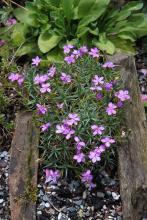
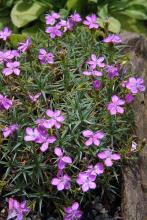
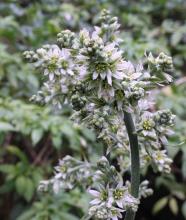
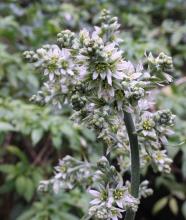
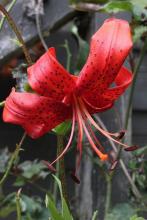
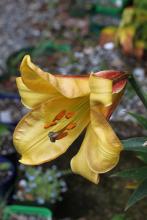
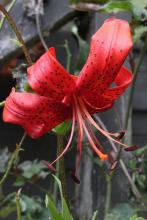
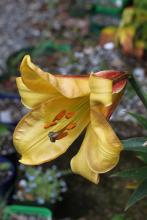
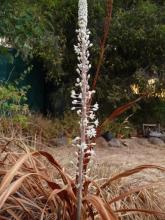
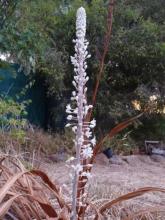
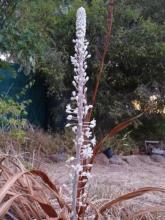
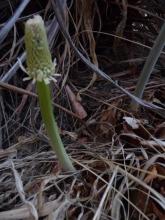
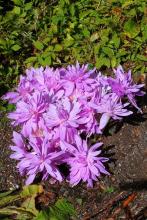
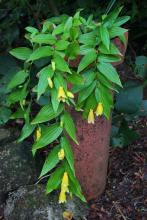
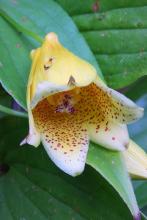
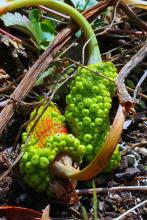
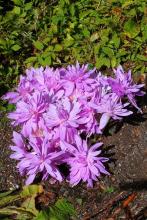
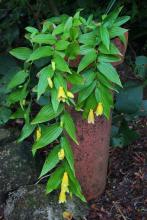
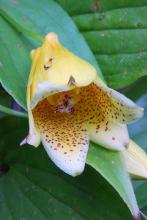
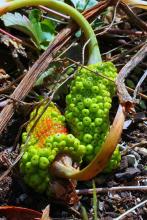
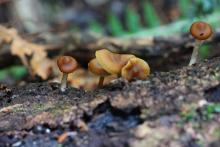
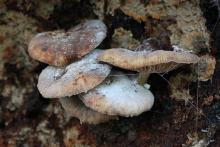
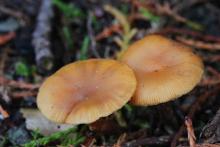
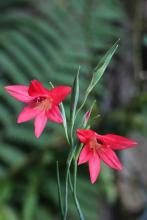
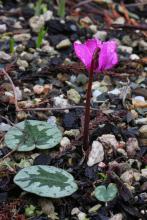
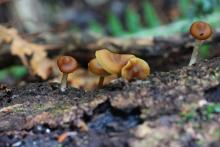
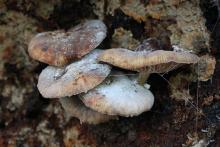
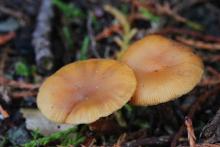
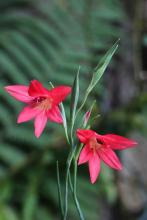
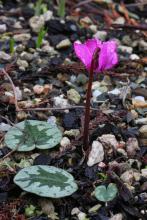
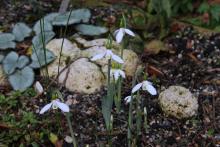
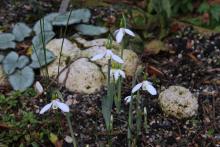
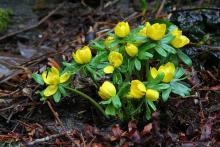
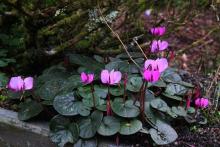
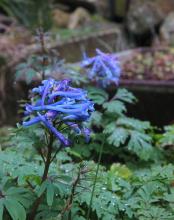
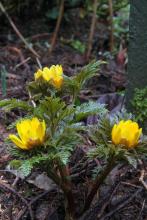
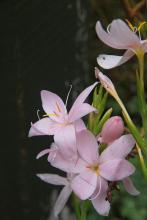
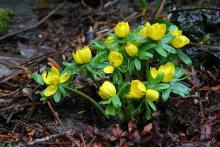
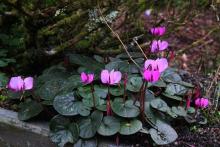
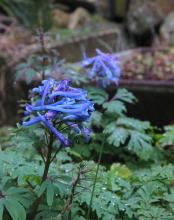
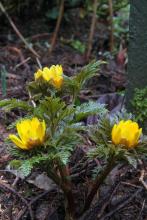
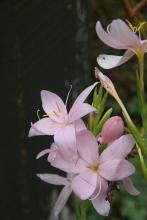
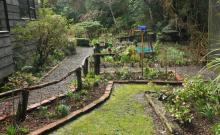
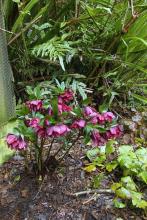
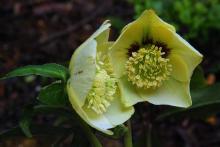
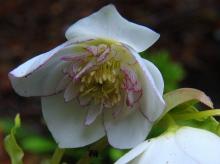
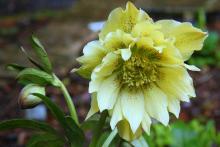
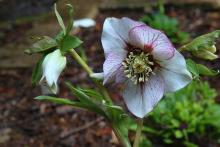
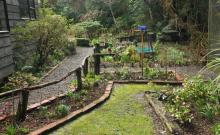
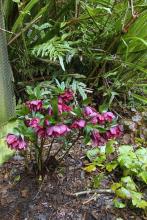
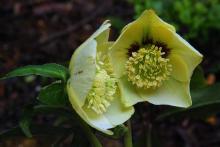
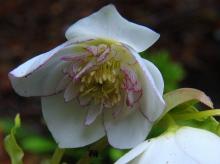
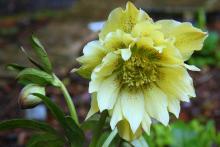
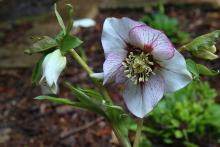
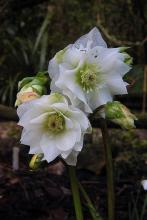
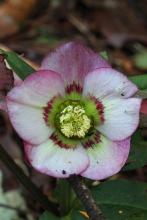
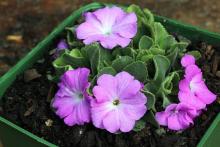
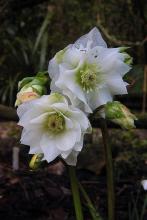
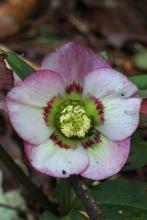
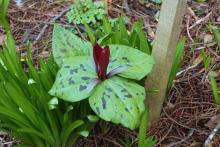
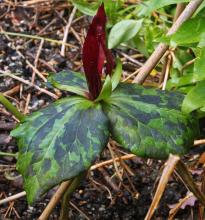
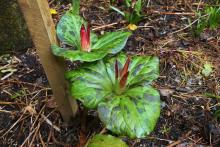
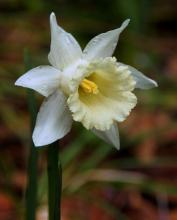
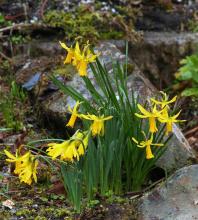
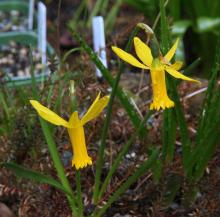
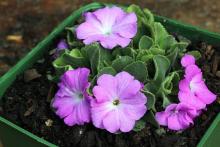
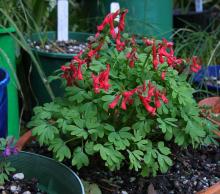
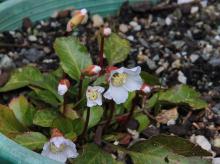
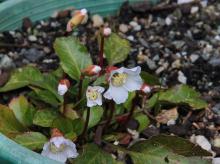
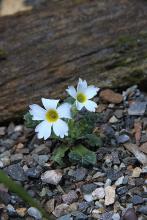
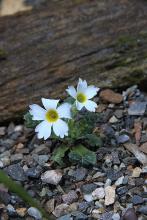
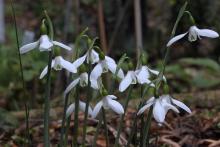
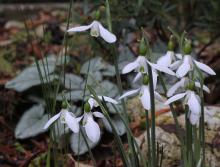
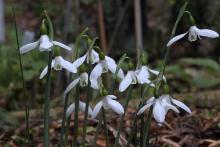
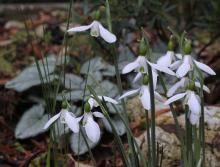
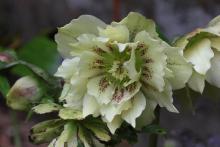
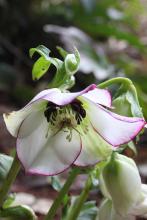
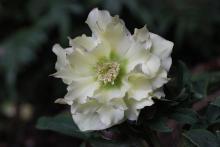
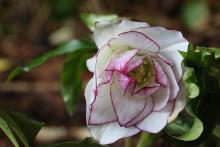
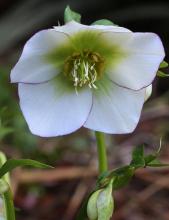
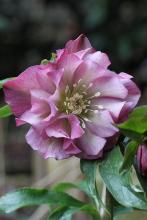
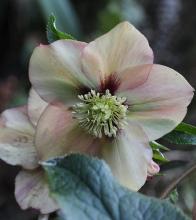
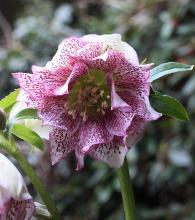
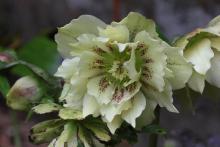
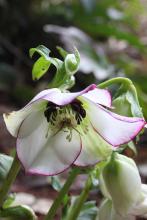
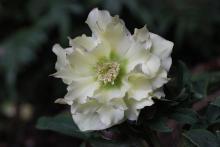
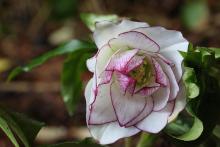
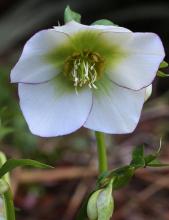
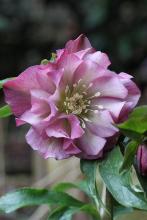
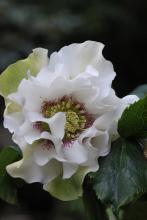
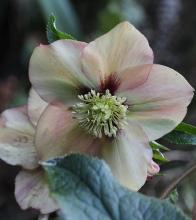
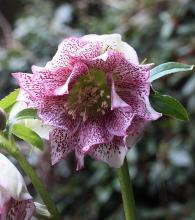
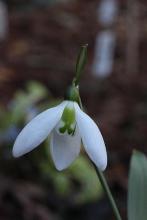
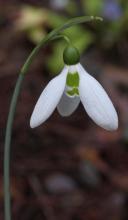
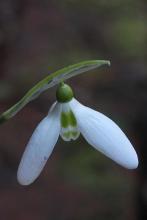
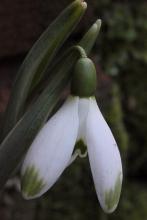
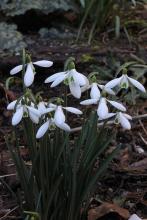
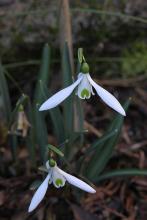
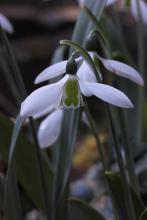
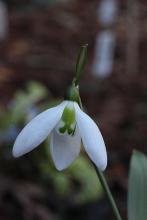
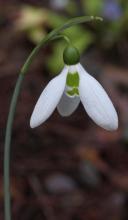
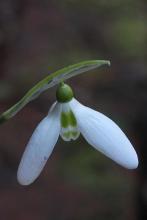
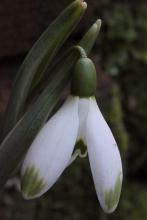
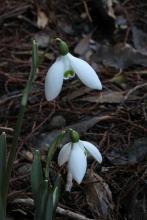
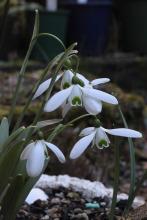
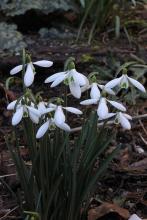
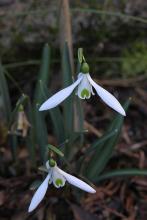
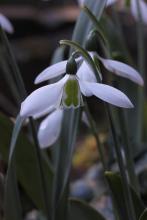
Eranthis hyemalis Schwelfeglanz from seed flowering for the first time .A subdued apricot colour .I've posted a pic of the normal yellow form also currently in bloom for comparison .
I like the colouring of Crocus pestalozzae
and Crocus sieberii Firefly .
I'm not that clued up on Galanthus however i think this one is G.caucasicus